selected curatorial work
2022-2025
This is a selection of recent curatorial work & collaborations. For a detailed overview visit the website of The Balcony The Hague (co-founder, curator), Art Au Centre Liege (guest curator), and Cas-co Leuven (residency coordinator).
recently in The Hague
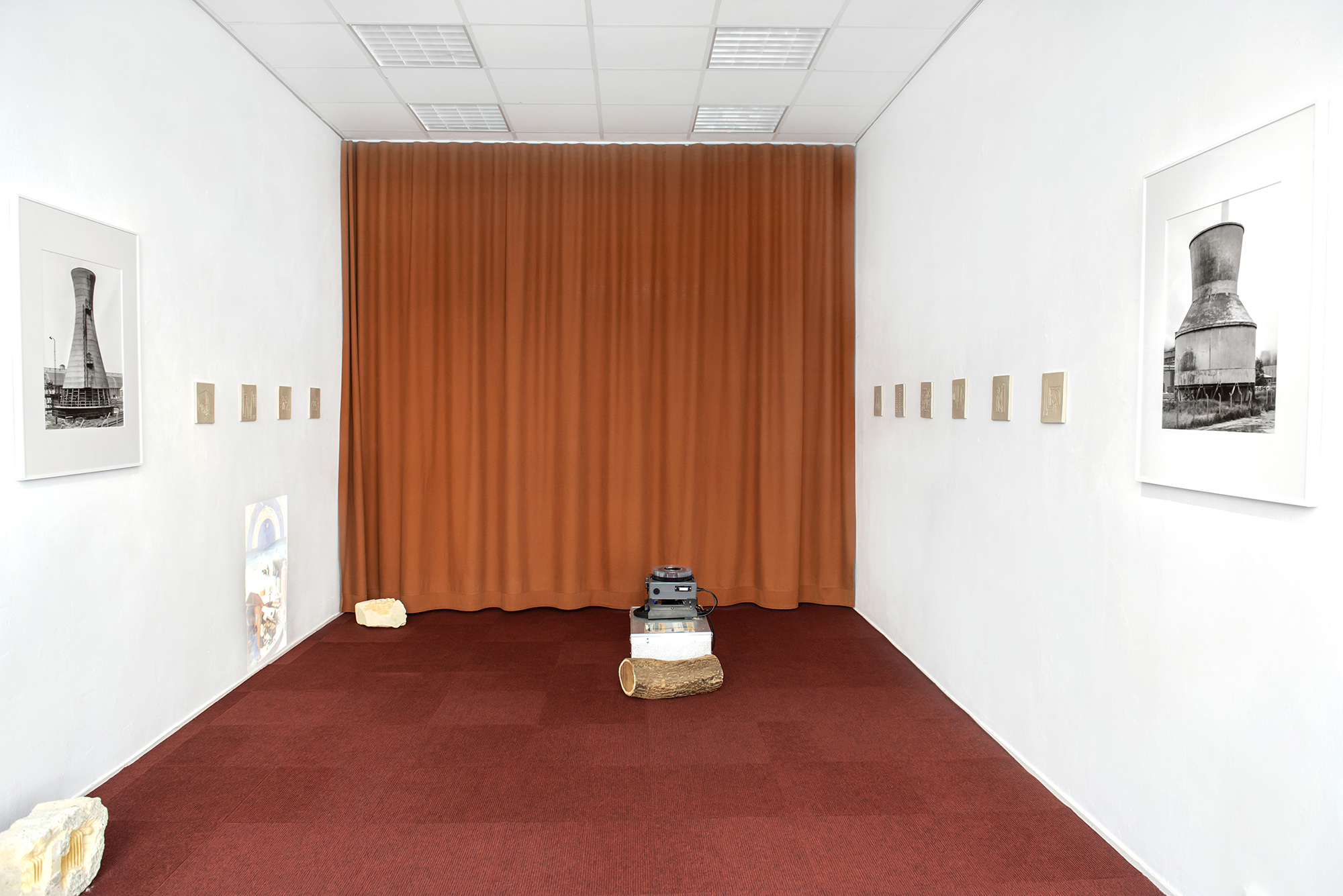
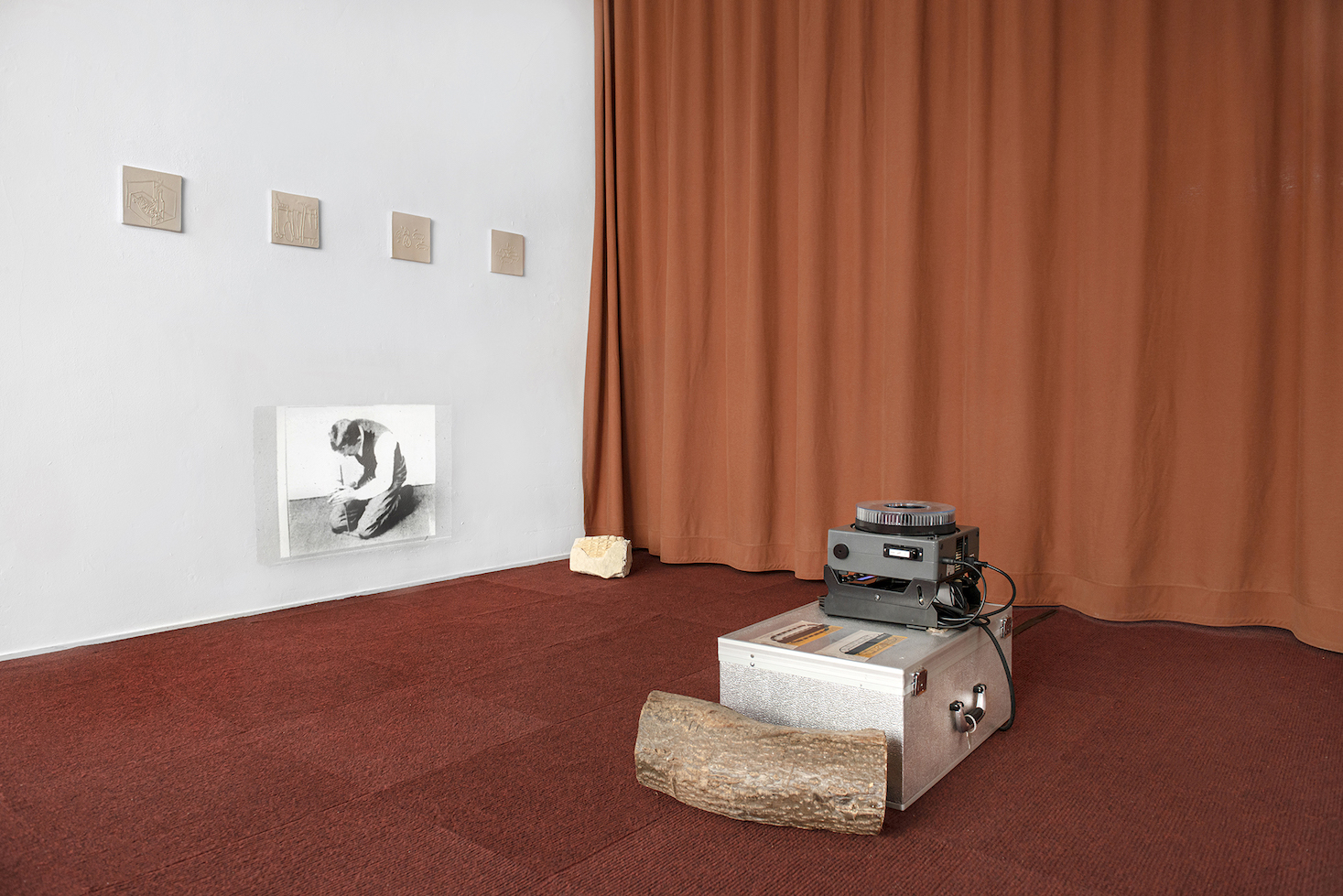
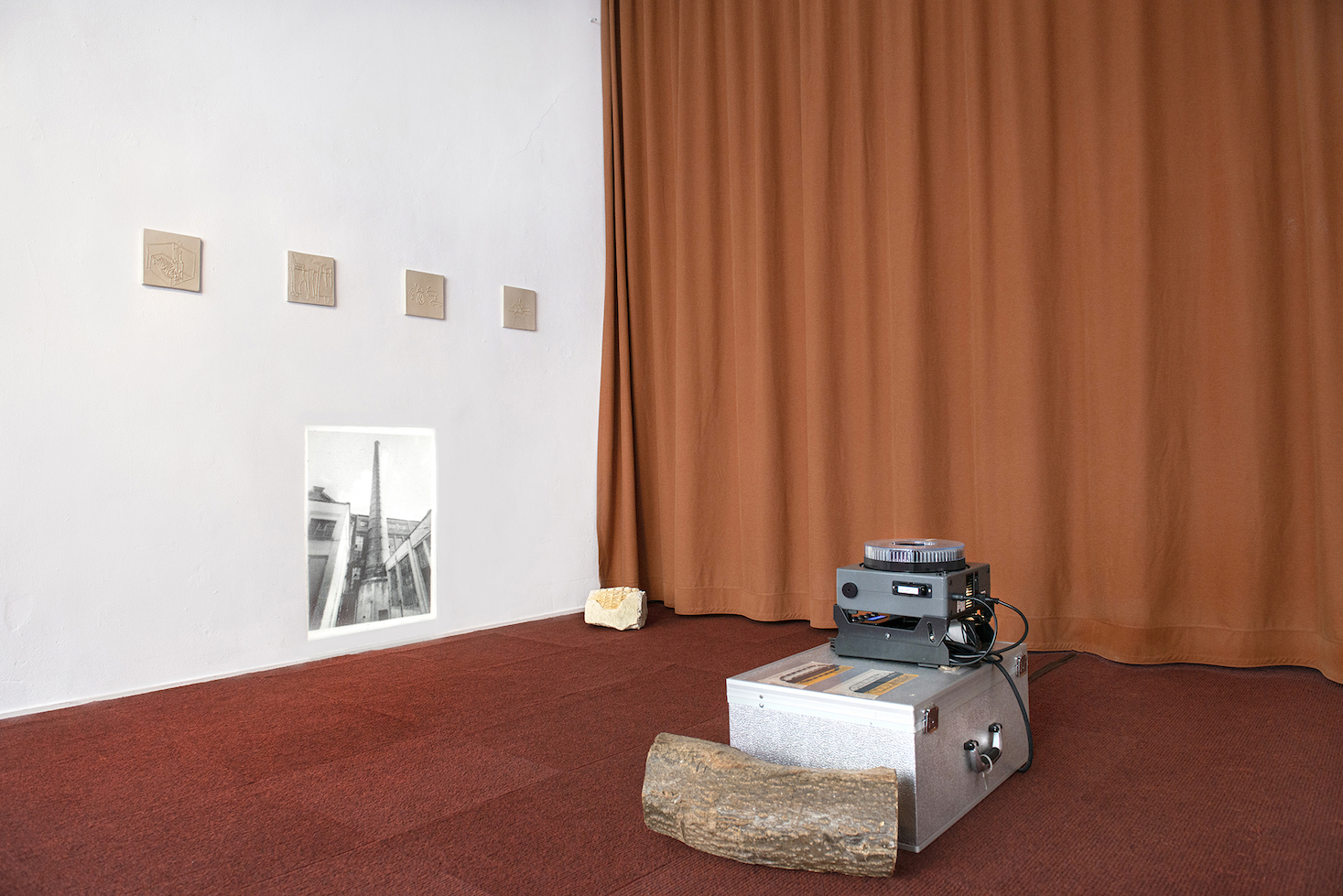
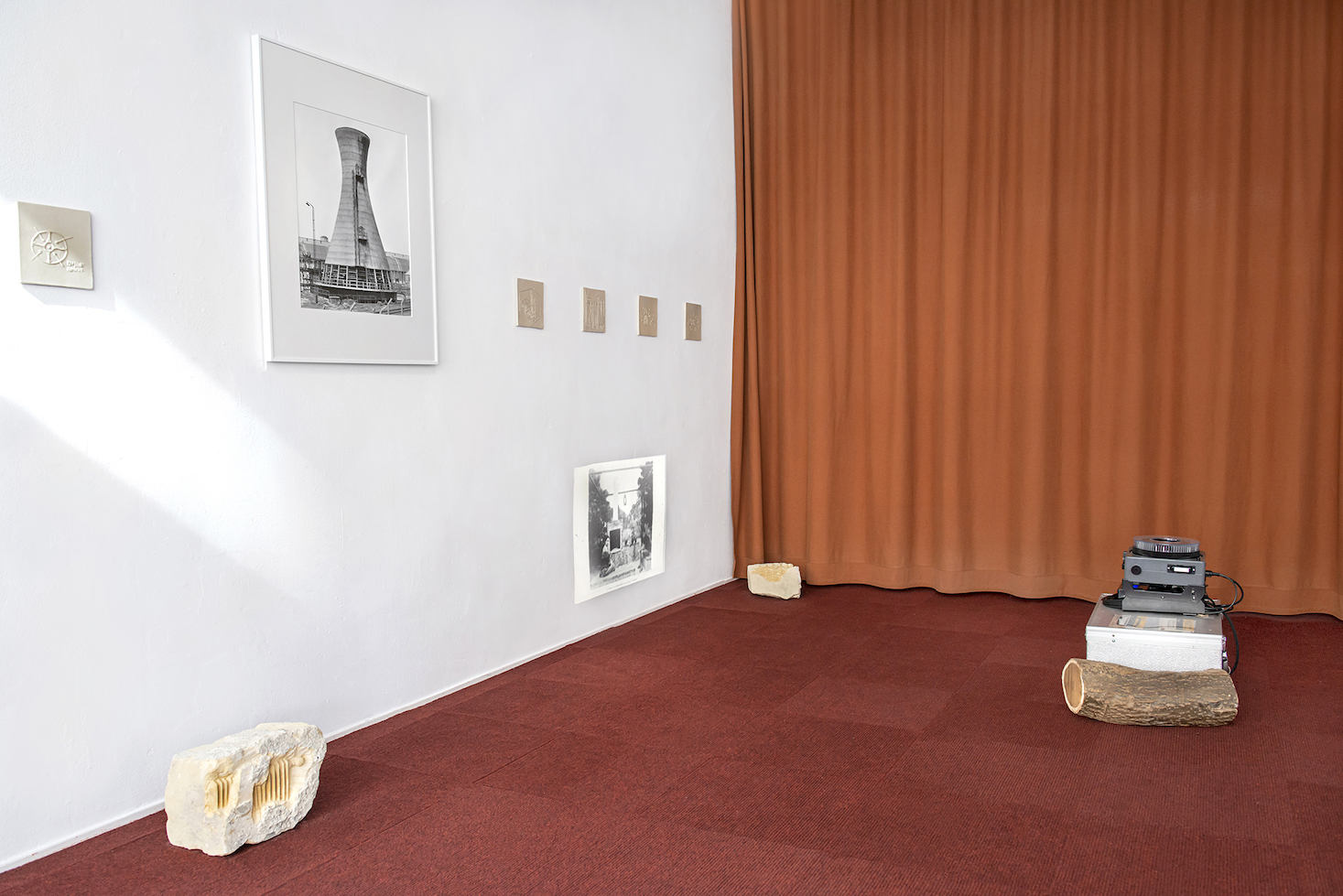

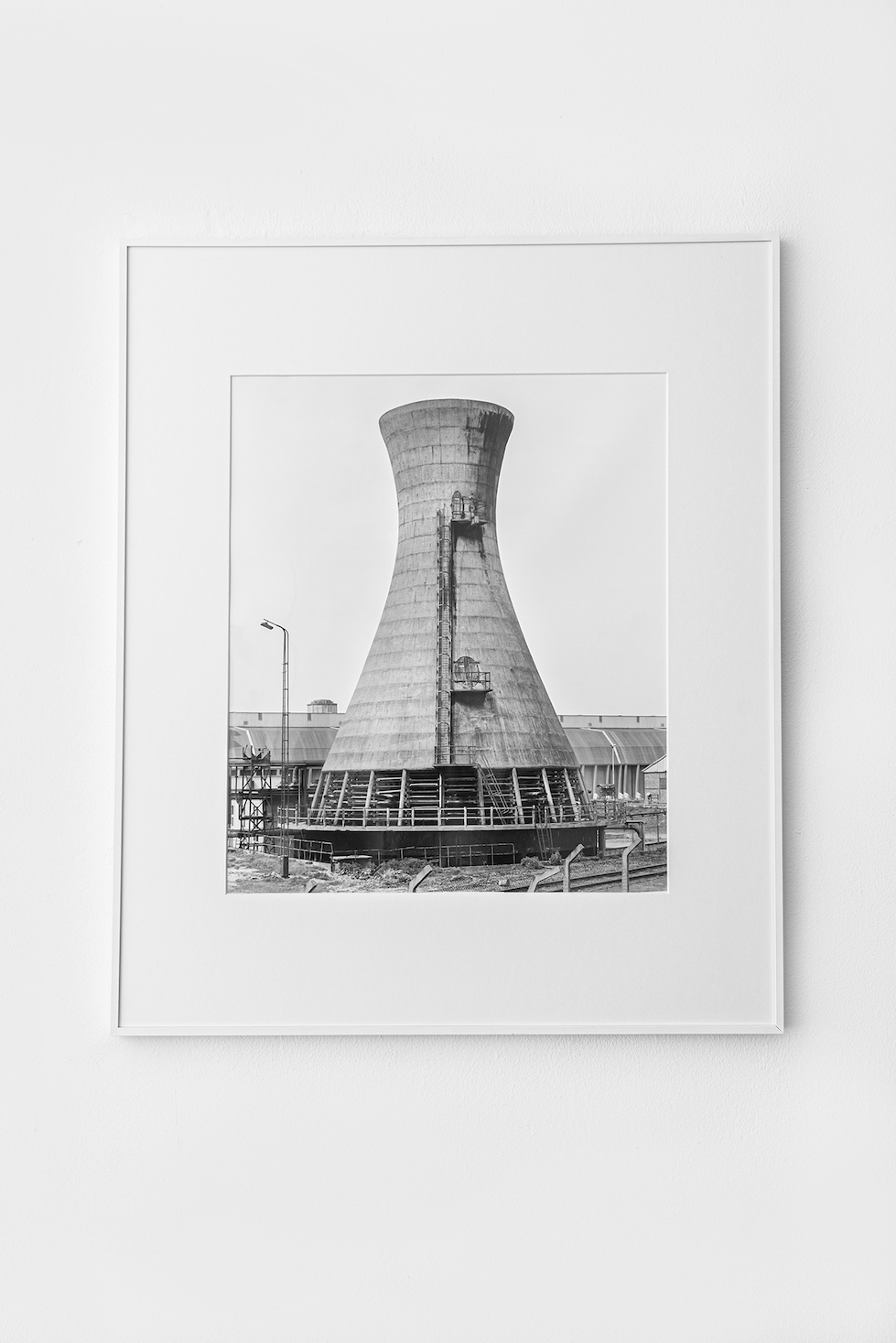


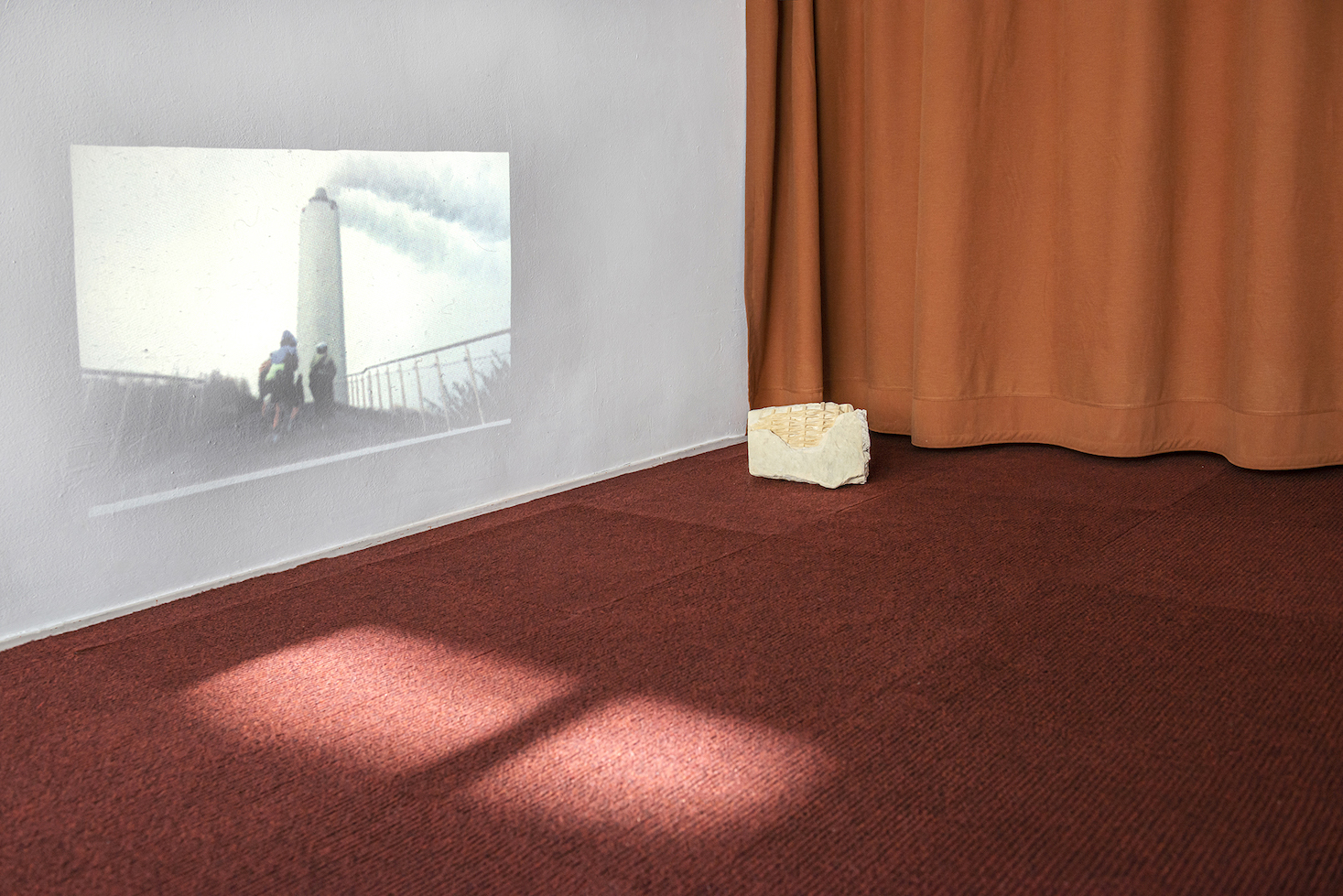
Extractive Imagination(s): Chapter 2
with works by Clémentine Vaultier, Ciel Grommen & Maximiliaan Royakkers (Atlas of Ovens), Bernd & Hilla Becher and Arjun Das.
part of The Balcony’s new cycle of exhibitions,
ON VIEW
JUN.20—SEP.27.2025
Fri-Sat: 13:00 - 18:00
Mon-Thu by appointment
PUBLIC PROGRAM
FRI.JUL.18
Vreugdevuur Scheveningen. Film screening & photobook presentation
With filmmaker Romke Hoogwaerts
→ more info here
PUBLIC TALK
FRI.SEP.26
With scholar Stephanie O’Roucke
→ more info soon
The Balcony, nieuwe molstraat 14-A2, The Hague NL
about
The second chapter of Extractive Imagination(s) examines the overlap between the physiological human need to maintain a body temperature of 37°C and the (social) infrastructures we’ve developed to stay warm – what we define today as architecture. In other words, how did the harvesting of resources related to our quest for heat (initially wood, peat and coal) shaped social gatherings and the domestic space?
“The search for warmth created social and political forms of grouping, like vigils in the countryside: a characteristic element of traditional rural life, is well motivated by the search for warmth, as well as by the desire to 'enjoy a lamp, or fire maintained at common costs'. – Philippe Rahm.”
The exhibition includes the production of new work by Clémentine Vaultier, Ciel Grommen & Maximiliaan Royakkers (Atlas of Ovens), existing work by Arjun Das, and original prints by Bernd & Hilla Becher.
How and what do we extract to fire? More importantly, with whom do we share the resulting warmth? The exhibition looks at infrastructure in The Netherlands, particularly in The Hague.
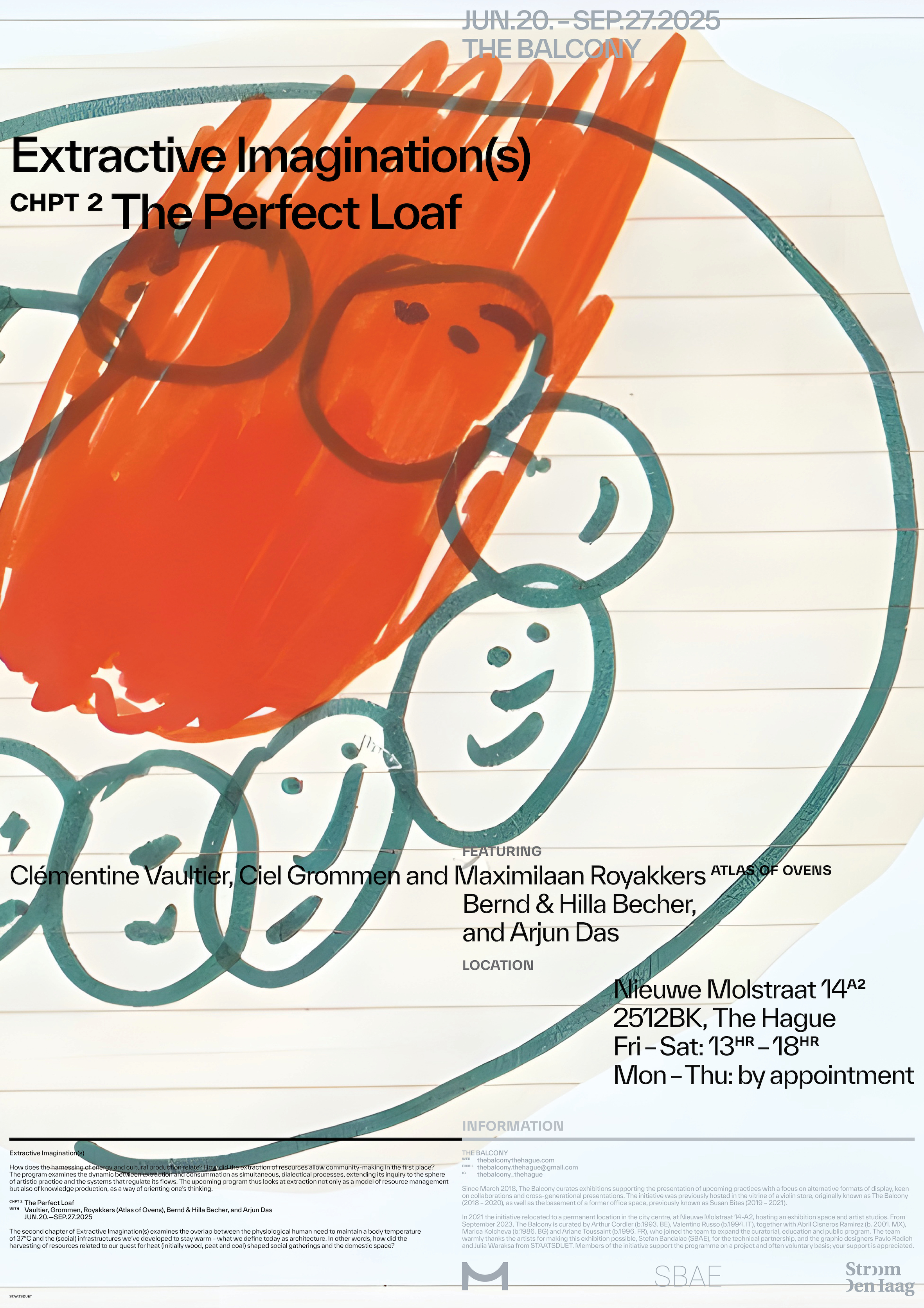
recent





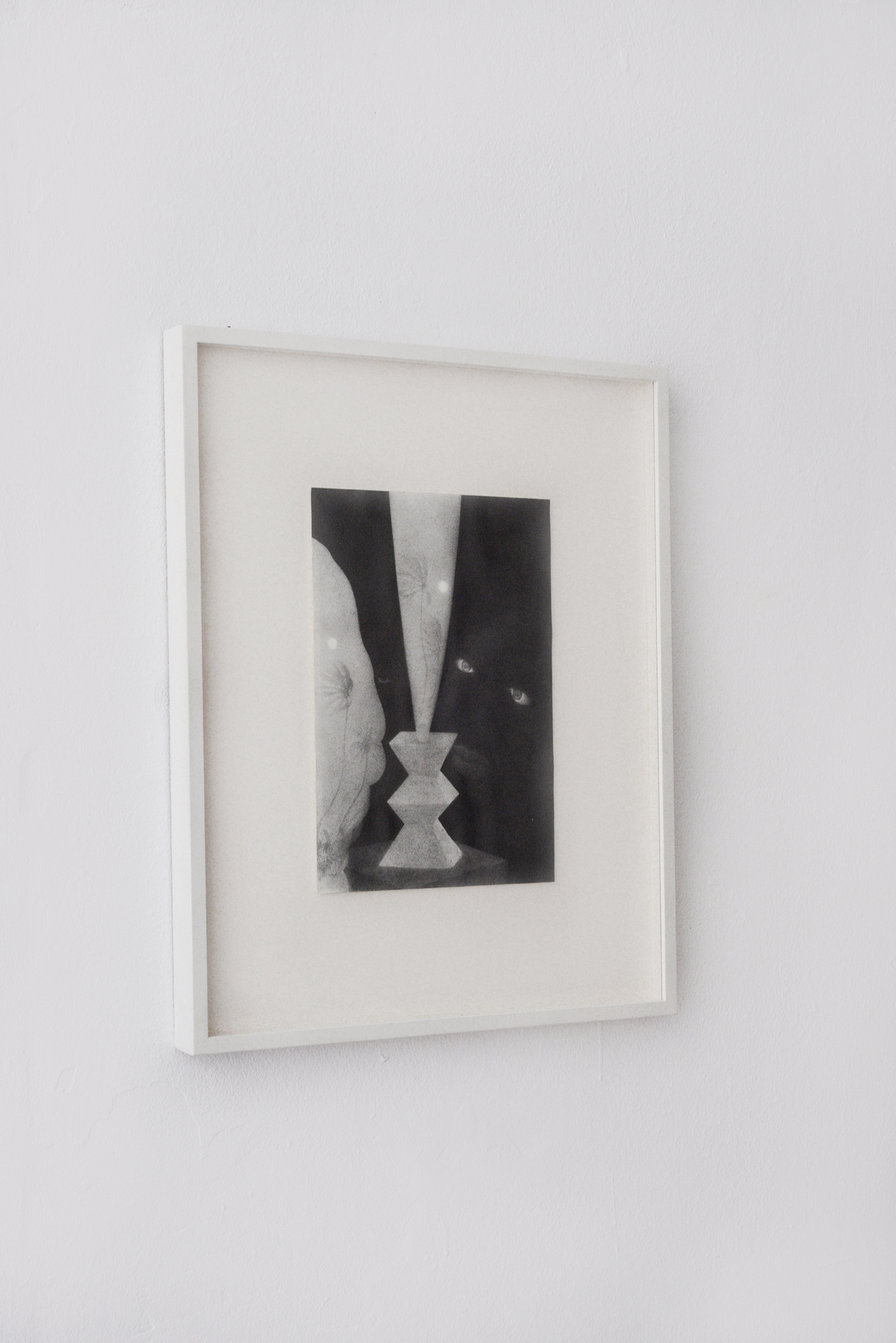

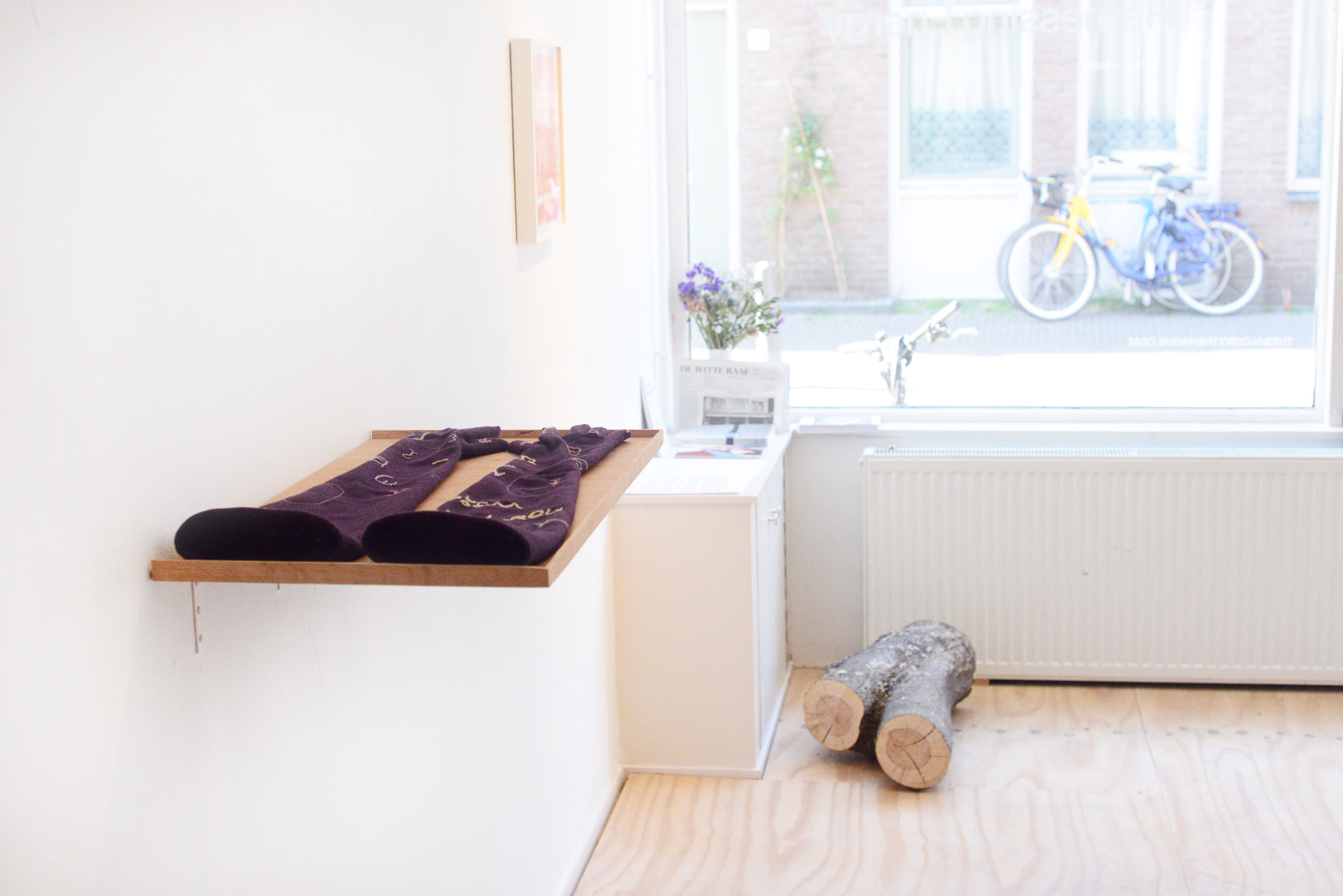


Extractive Imagination(s): Chapter 1
with works by Elsa Brès, Adele Dipasquale, and Pedro A.H. Paixão
part of The Balcony’s new cycle of exhibitions,
MAR.07.—MAY.25.2025
OPENING
Friday MAR.07 — from 19:00 during HOOGTIJ#80
PUBLIC PROGRAM
Sound Model Drawing Sessions
SAT.MAR.15.
16:30–18:00 & 19:00–20:30
The Balcony, nieuwe molstraat 14-A2, The Hague NL
about
On March 7th, The Balcony will launch Extractive Imagination(s), its entirely new exhibition cycle !
Since the advent of sedentary Western civilizations, communities have transformed matter into assets through systems of extraction—harvesting crops, sifting soil, and distilling water. The speed and visibility of extraction contrast with the slowness and subtlety of its exhaust — that which is left behind, consumed and deemed useless within productive logics. The upcoming exhibitions explore extraction and consumption as intertwined processes.
How does the harnessing of energy relate to cultural production? How to produce without extracting? The inaugural chapter, Pied-à-Terre, Harnessing Energy, features new & recent works by Elsa Brès, Adele Dipasquale, and Pedro A.H. Paixão.
We look forward to Elsa and Pedro’s first exhibitions in The Netherlands. The Balcony is also excited and pleased to present new work by Adele Dipasquale.
The exhibition is supported by Stroom Den Haag, the Mondriaan Fonds, Nieuwe Instituut, and SBAE. The Balcony is co-curated in conversation with Valentino Russo, Mari Kolcheva, Abril Cisneros and Ariane Toussaint.
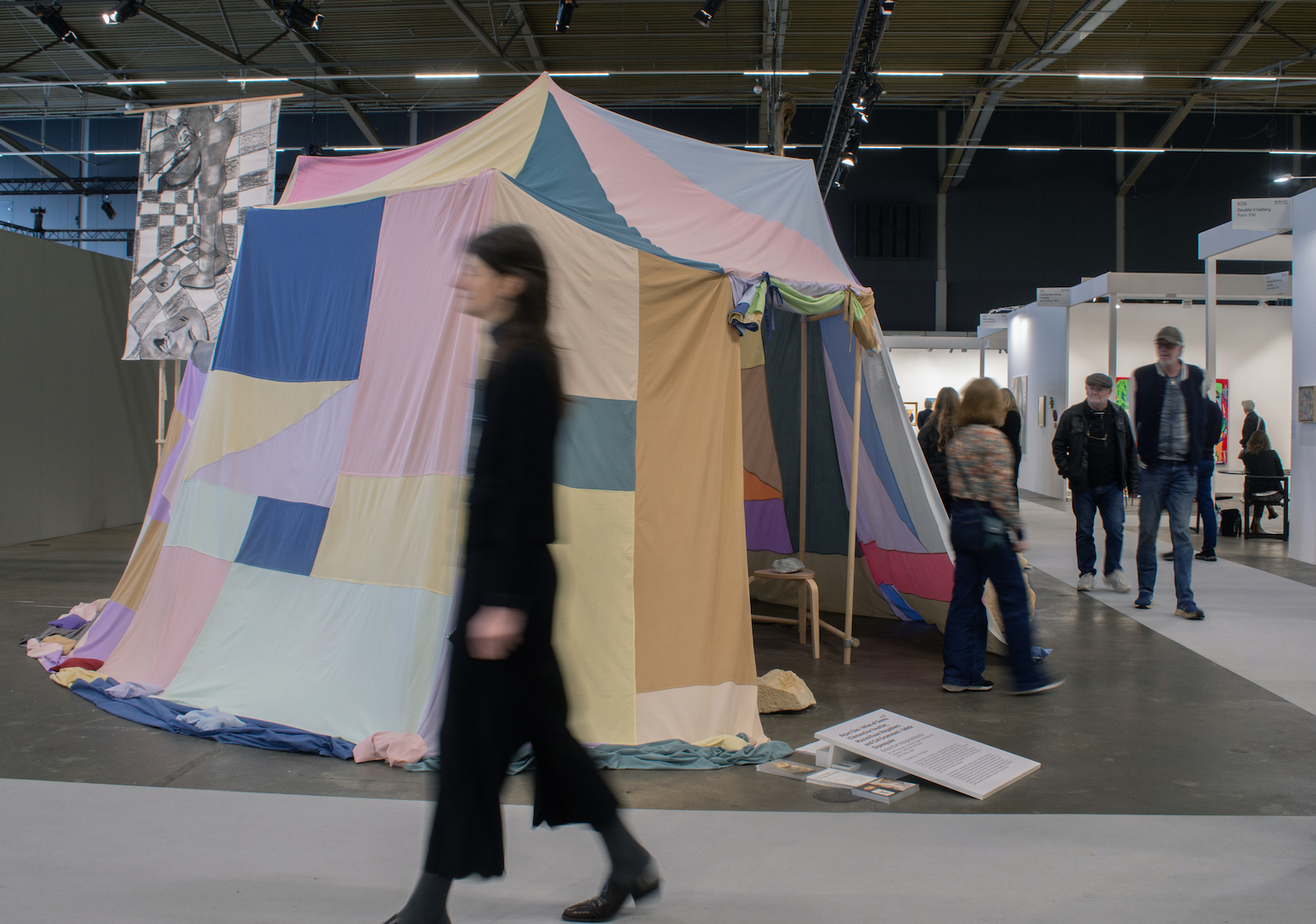




with works by Adele Dipasquale, Vaultier, Grommen and Royakkers (Atlas of Ovens) and Arjun Das
part of The Balcony’s new cycle of exhibitions
MAR.27—30.2025
Art Rotterdam—Intersections
OPENING / ON VIEW
By invitation MAR.27 11:00–21.00
MAR.28–30. 11:00–19.00
Rotterdam Ahoy. Ahoyweg 103084 BA Rotterdam NL
about
The Balcony is pleased to participated for the first to Art Rotterdam, Intersections, presentsing an iteration of its signature trio exhibition format, echoing its current exhibition cycle, Extractive Imagination(s). Structured as a single installation exploring warmth and heat as producers of social relations, the presentation features a large textile commission by Adele Dipasquale, sheltering the research project Atlas of Ovens by the collective Vaultier, Grommen, and Royakkers, and punctuated by Arjun Das’ series of limestone sculptures.
The presentation is curated and co-produced by The Balcony. Kindly supported by Stroom Den Haag.



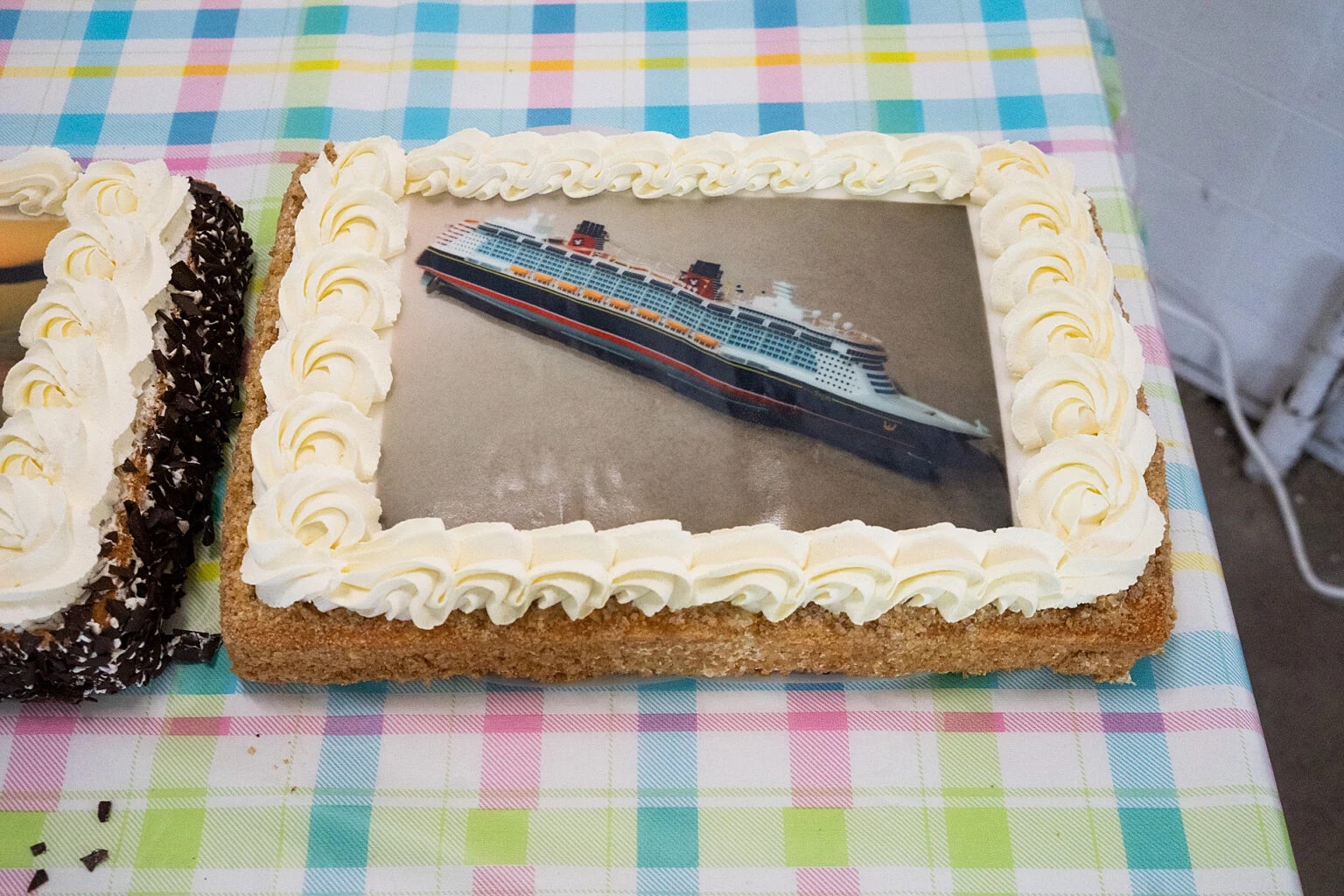
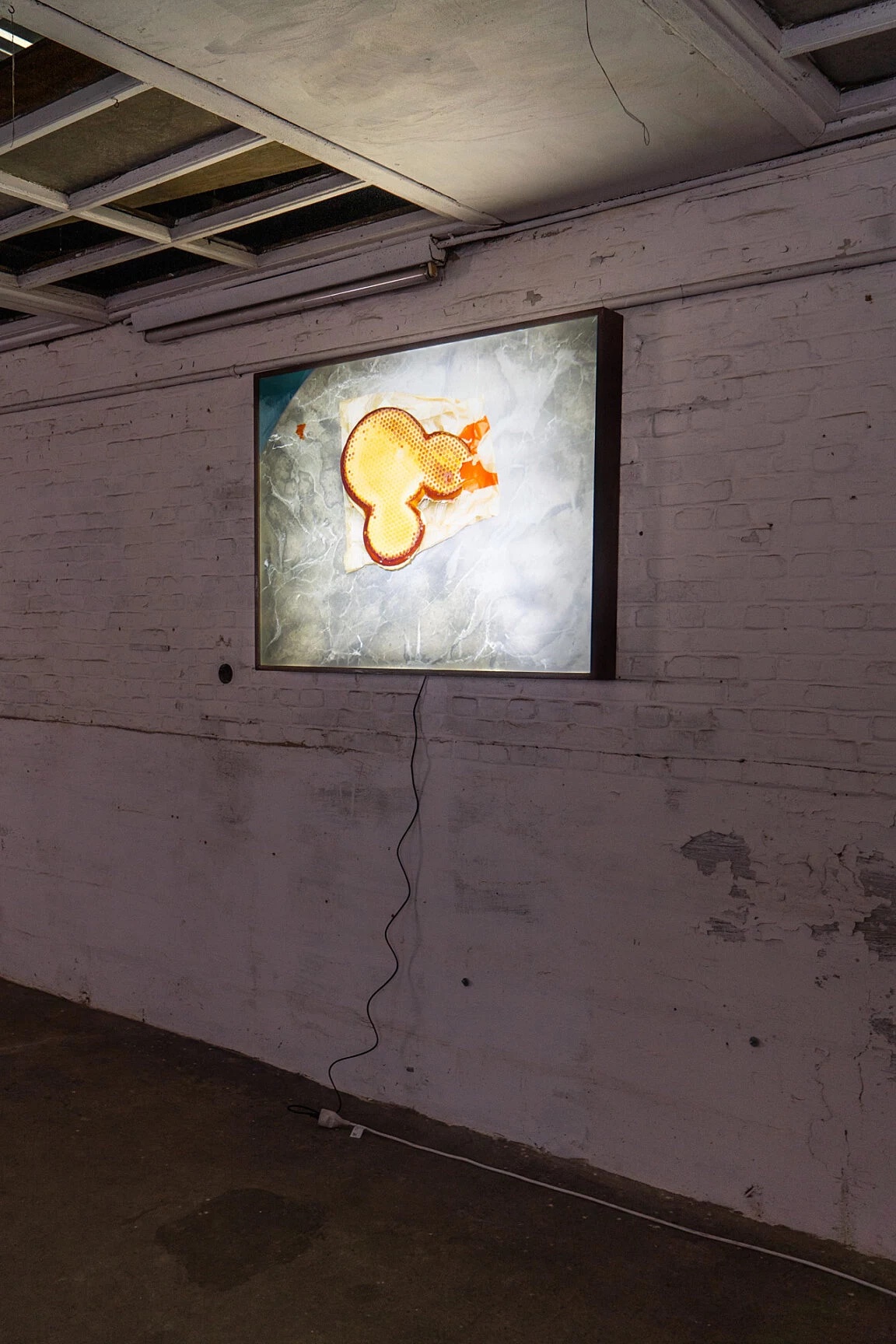
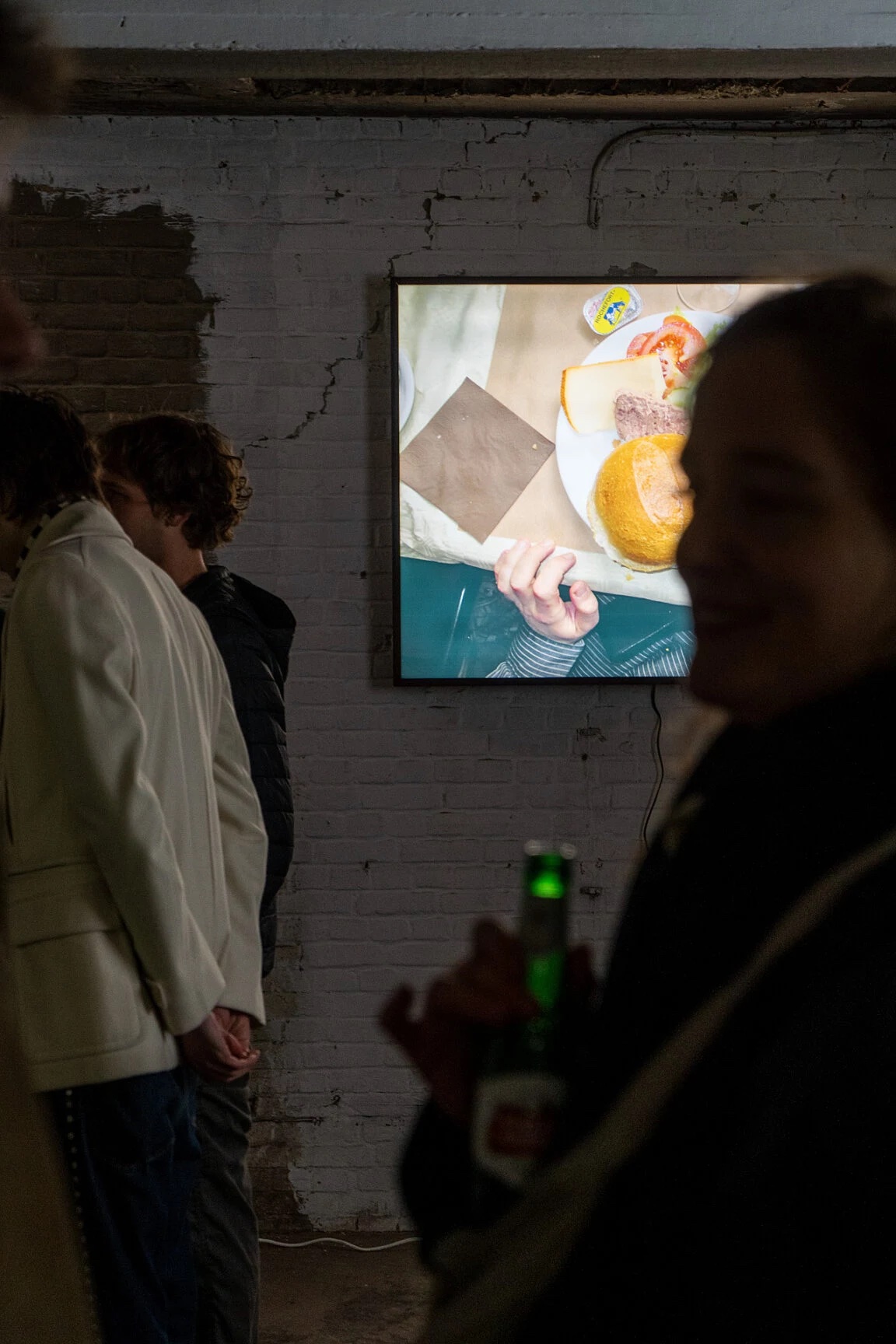

13.03 – 13.04.2025
Cas-co, studio Minckelers, Leuven BE
“Jente Waerzeggers is a photographer, visual artist, and musician. For the past years, he has been documenting the food he and his friends ate, as well as the contexts in which they were experienced. Jente’s lens is a dog’s muzzle sniffing its way through life. He captures spontaneous moments and encounters in the music and artistic scenes of Belgium, his photographs make use of razor-sharp flashes, wobbly perspectives, teetering blurs, and unbalanced horizons: all imperfections welcomed into Jente’s practice. The images are simultaneously seductive, unsettling, and unpredictable”.
— excerpts from the exhibition text.
with work by Joseph Thabang Palframan
31.08 – 22.09.2024
Cas-co, studio Minckelers, Leuven BE
“Joseph Thabang Palframan is a painter.
It’s hard to write about painting he says. We agree.
« Bullet-point paintings »
From the 19th century onwards, western nations have built more monuments than ever before, often at the expense of others. Monuments which in turn served as a narrative of national myth-making flooded with self-proclaimed splendor, and feasts of engineering. Left aside the monumentalised understanding of cultural nationalism, affective nationalism seems to be a much more suitable route in understanding Joseph’s take on Brussels’ Atomium. The suggestion of affective nationalism is to oppose a masculinist reading and disembodied framing of national projects, in opposition to a much more subtle, humbling, and generative reading of felt experiences [...]”. A.C
— excerpts from the exhibition text. Complete version here
︎link to the exhibition
︎Joseph Thabang Palframan


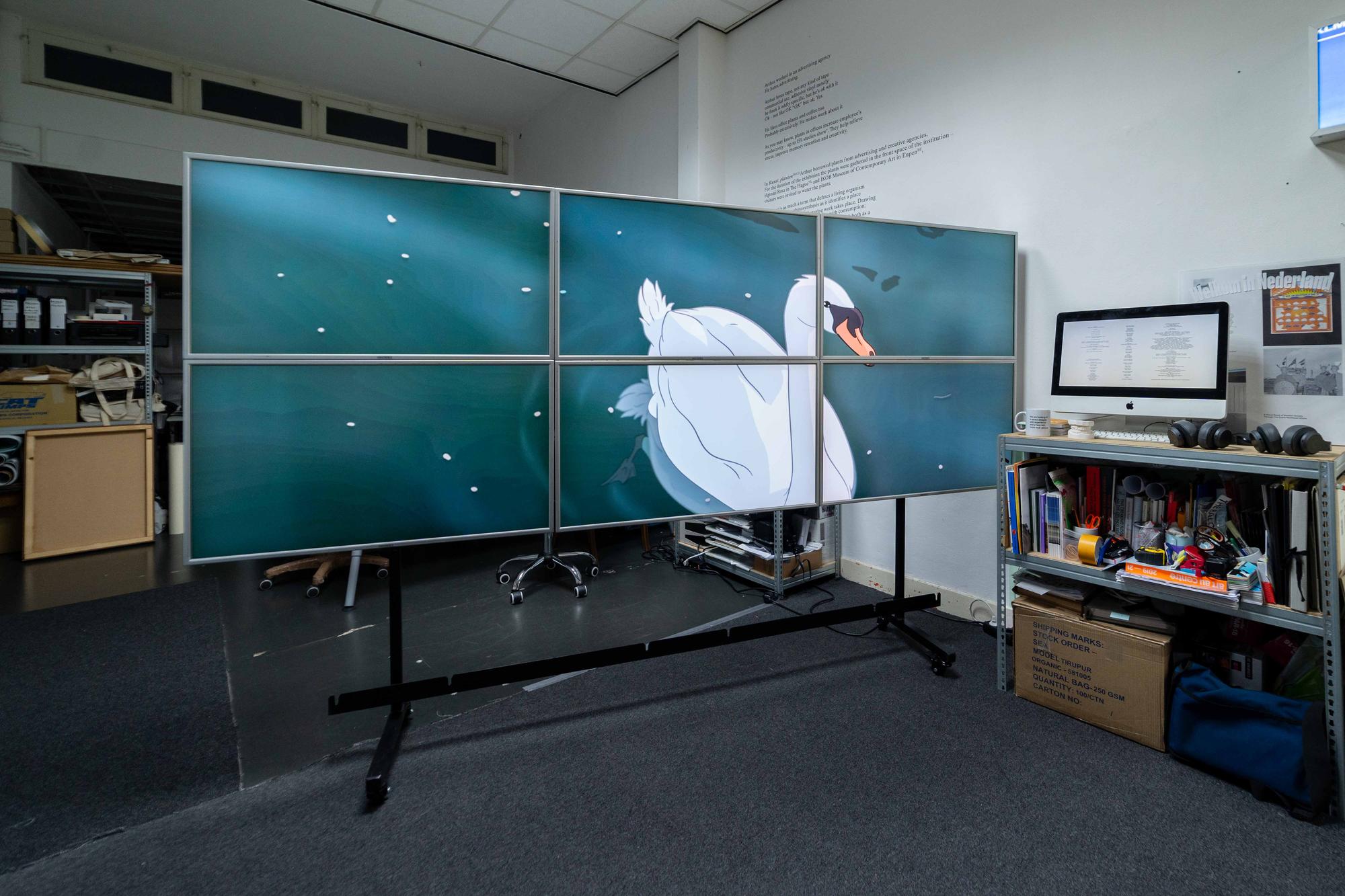
with works by Denicolai & Provoost and Sean Charlton White.
part of The Promise of Ruin(s),
NOV.10.2023—JAN.27.2024
The Balcony, nieuwe molstraat 14-A2, The Hague NL
about
The sixth chapter of The Promise of Ruin(s) turns to the conceptual remnants of the Nature/Culture dichotomy, which became, since the Enlightenment, the dominant paradigm for understanding our relationship with the environment, justifying its commodification, and championing a historicity focused on the development of human civilization and its hub: the city.
The exhibition's title is a play on the 19th-century book 'Generelle Morphologie der Organismen' ('General Morphology of Organisms') by German zoologist Ernst Haeckel. Known as a speculator among his peers, he often ventured to use the same physical laws to explain both the organic and the inorganic. Echoing his aim to account for interrelation, the artists in this chapter highlight the obsolete character of positioning nature as an autonomous entity in human development, while articulating how clinging to this binary distinction generates a feeling of absurdity in light of the proliferation of artificial landscapes and ultra-controlled natural cycles. How to entertain the illusion of ‘virgin nature’ after capital’s unstoppable expansion into what was once out of its reach? Through works that challenge the conventions of genres typically associated with faithful representations of reality, these artists transform urban areas organised by neoliberal structures—where such dissonances manifest most intensely—into sites of inquiry.
︎link to the documentation



with work by Sonia Mangiapane (Melbourne, AU)
05.10 – 31.12.2023
Art Au Centre #13, Rue des Carmes 7B
exhibition route in the city centre of Liège BE
Sonia Mangiapane is a photomedia artist working with processes defined primarily by their interaction with light, as opposed to the exclusive use of the camera. Employing a range of camera-based and cameraless methods her practice takes the form of photographic prints and hybrid works on paper. She explores concepts relating to travel, Nature and notions of photographic time. Sonia's artistic interests are multi-layered; her approach discursive, process-oriented and experimental.
The colour darkroom is a core site of her practice. It’s a space in which she makes, rather than takes a photograph; pushing the boundaries of the photographic by undertaking conceptual and technical approaches which diverge from the photographic snapshot.
In the context of Art Au Centre, Sonia presents Ambient, Aberrant which calls into question the authenticity of the image, of Nature, of any mediated experience. It starts from the premise that the photographic gaze and the tourist gaze emerged at the same time (around 1840) and have been inextricably linked ever since. The landscape is a representation of the idea of nature; yet it is tamed, domesticated, managed. There is no nature here. The work speaks about the artifice of sightseeing, chasing the sublime, our relationship to Nature (or what we think it is). It comments on the way we experience places through our (phone) cameras.
In the vitrine, a series of prints were selected from Sonia’s extensive lirbary of images. Displayed in broad daylight, the print will slowly fade throught the duration of the exhibition. The images become memories.
︎link to the exhibition
with work by Tom Putman
08.06 – 31.08.2023
Art Au Centre #12, Rue de la Cathédrale 100
exhibition route in the city centre of Liège BE
Tom Putman studies, decomposes then re-composes objects taken from his everyday environment. His sculptures are often merging mass-produced objects with medieval looking craftsmanship. These objects and compositions convey an anachronic sense of widely available consumables, mostly colorful plastics, sometimes charming, other times odd.
Tom manufactures them using digital techniques such as laser cutting, CNC milling and 3D printing. The sculpture Foxglove refers to protection and defense. The lantern and its spikes symbolize the walls that protected cities during the Middle Ages. Inside the lantern hides foxgloves (also known as digitalis), a colorful plant known for its medical but also poisonous properties.
These are among the ideas sustaining Tom Putman’s practice, to be simultaneously attractive by the use of colors and familiar materials, but also historically grounded and surprising by the juxtaposition of references. Tom Putman (1994) studied Fine Art at AKI ArtEZ Enschede, The Netherlands and currently lives in Utrecht.
︎link to the exhibition








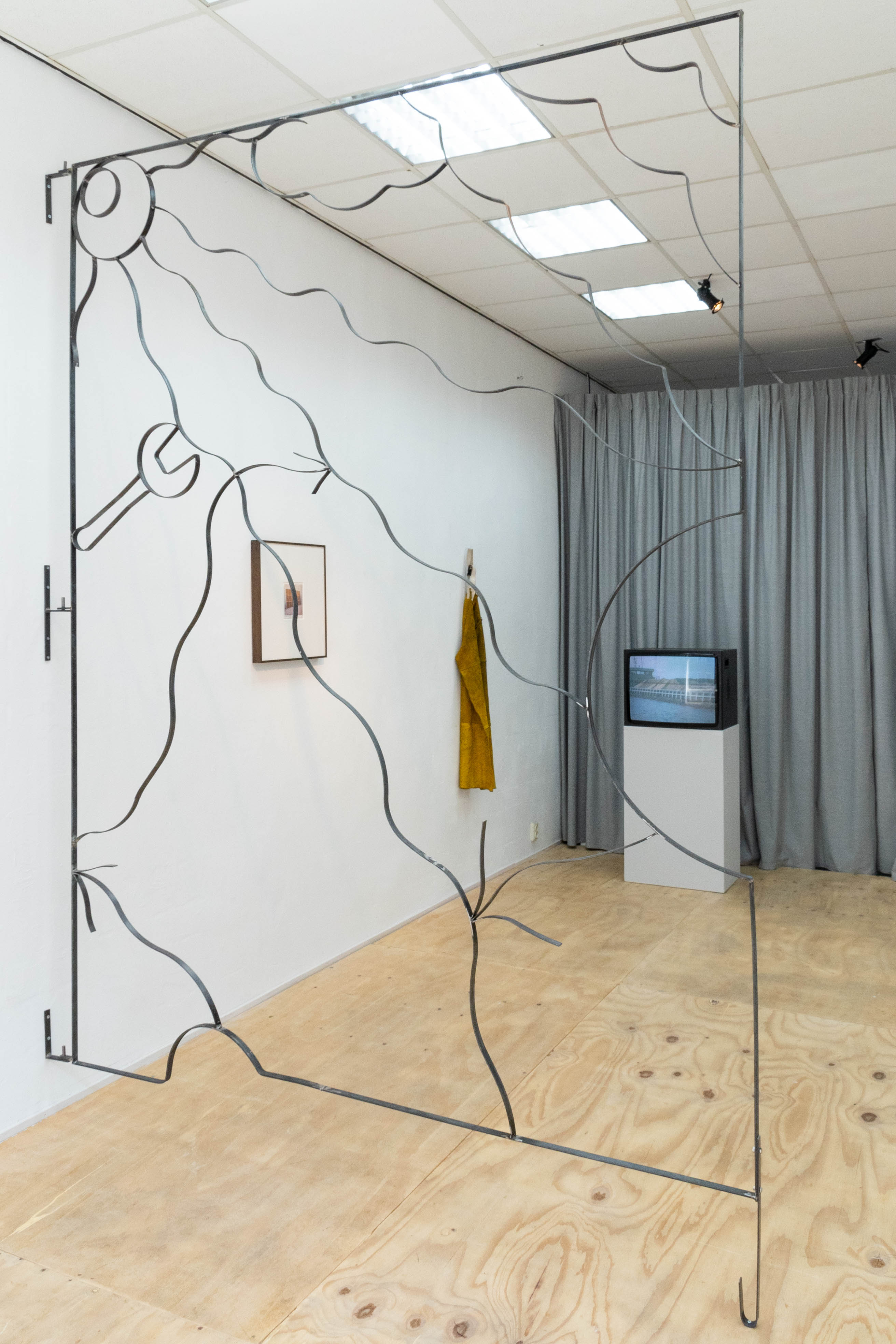

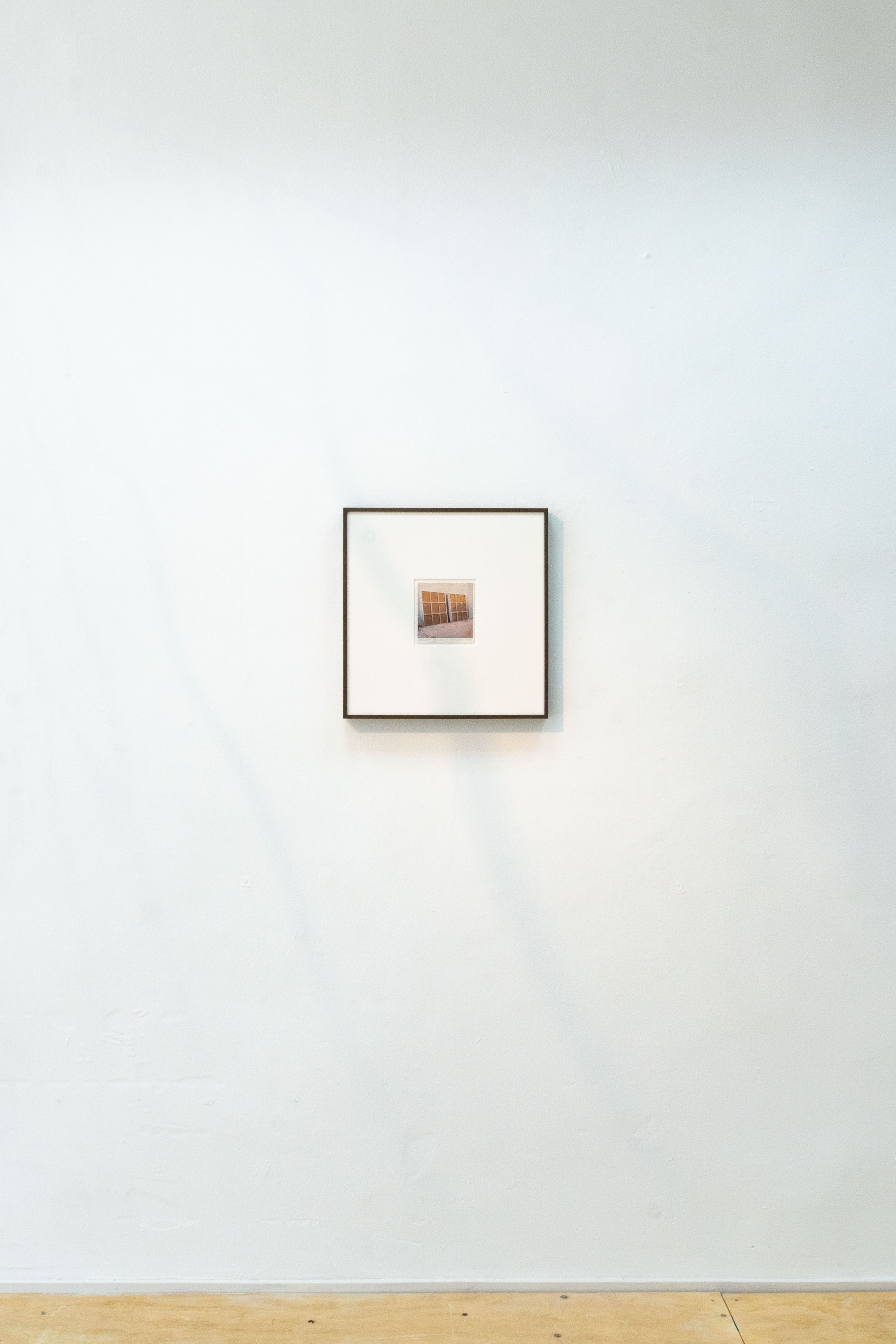




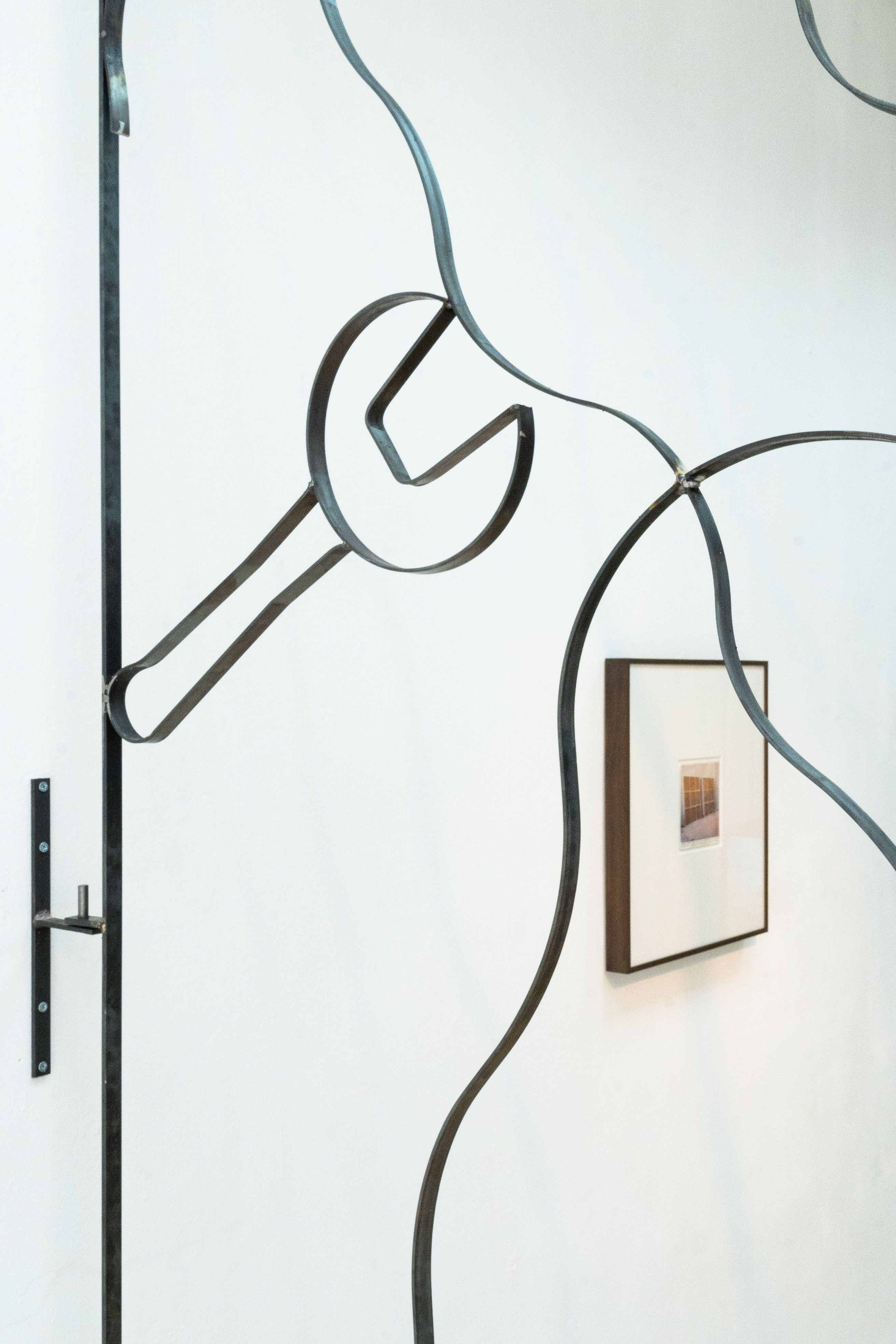

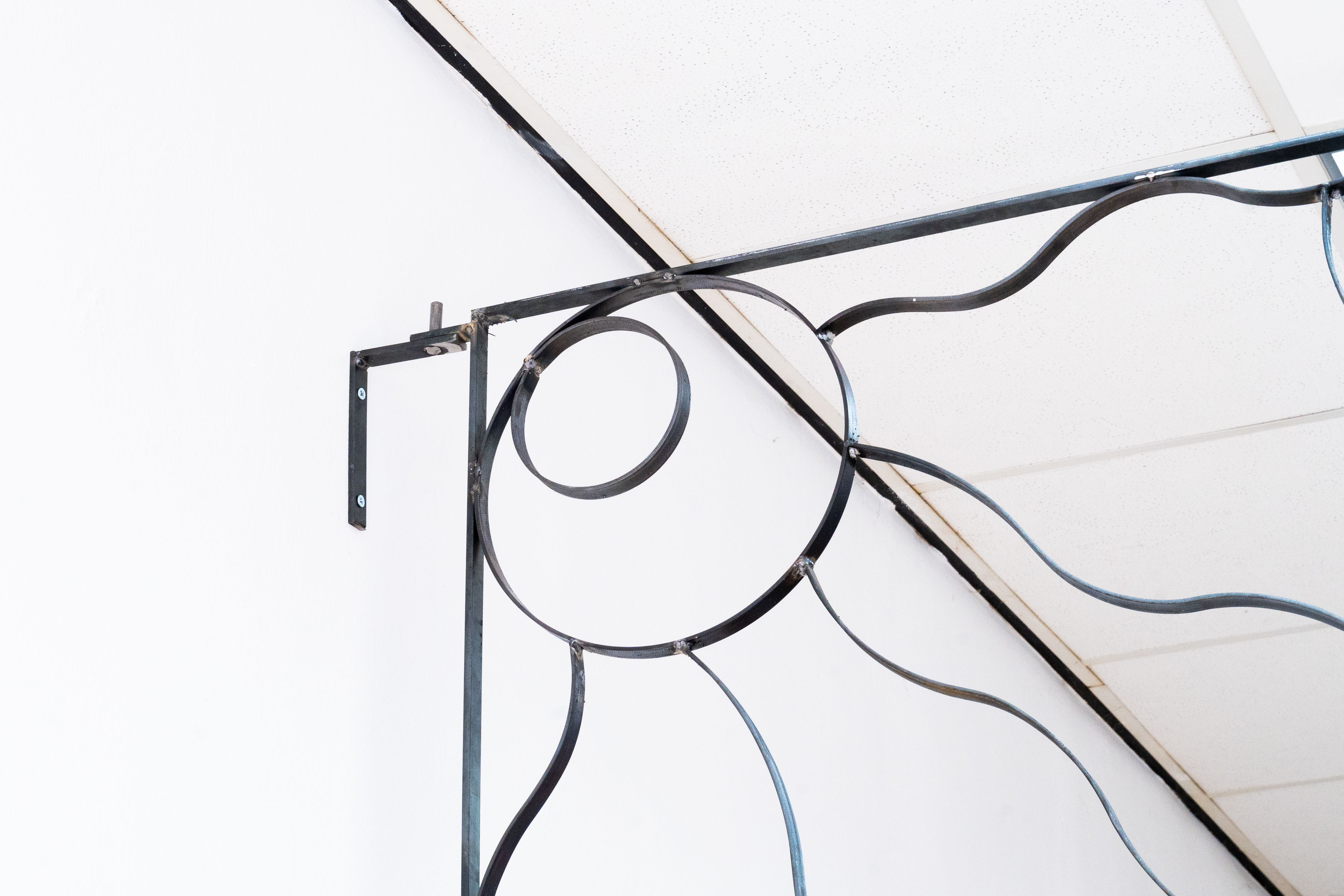
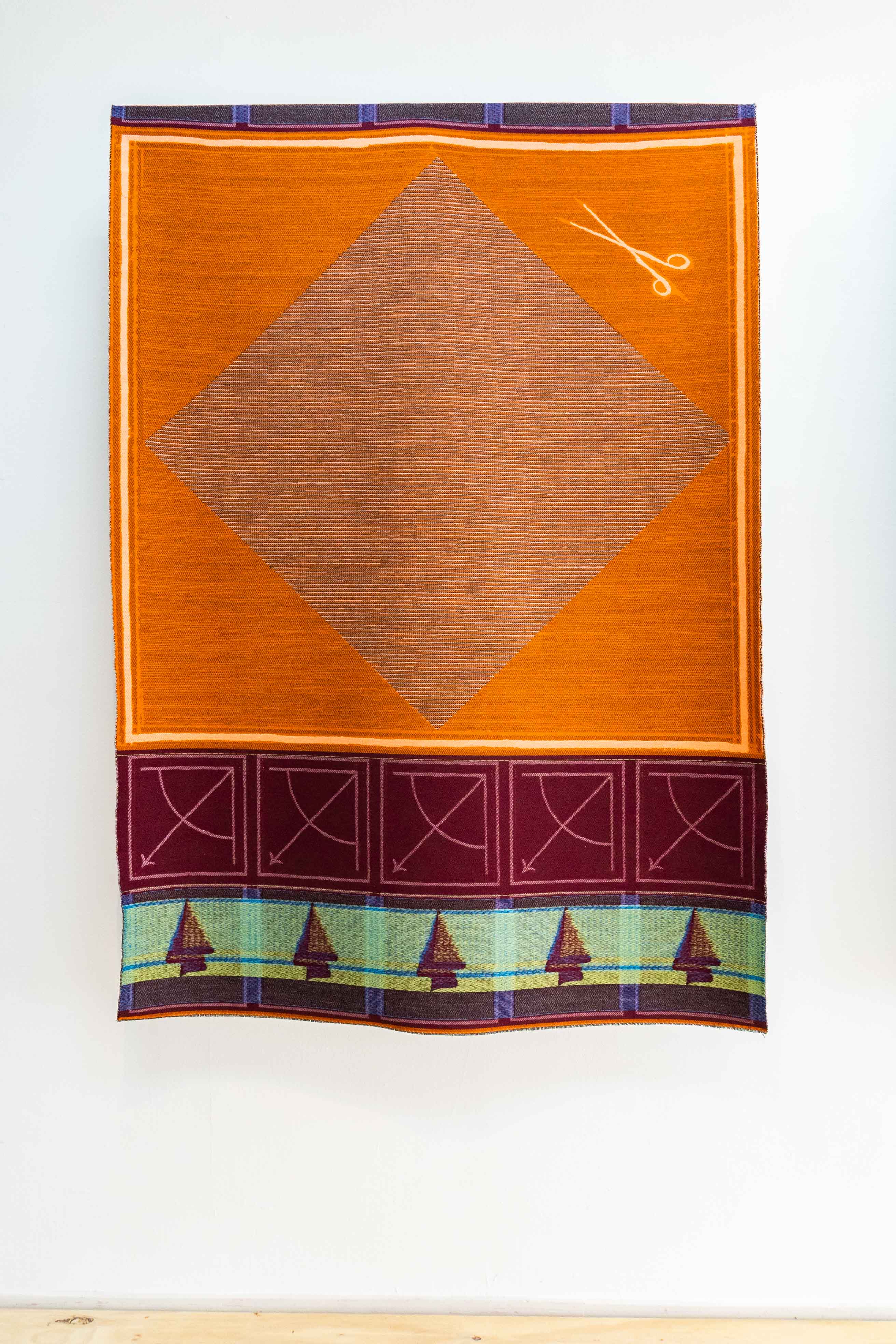


with works by Rinus Van de Velde, Alexis Gautier and Harriet Rose Morley
part of The Promise of Ruin(s), co-curated with Valentino Russo.
MAY.26. – JUL.29.2023
The Balcony, nieuwe molstraat 14-A2, The Hague NL
about
The exhibition Fully Worktioning binds the idea of working with that of being functional, functioning as a member of society at large and as a realised individual, who navigates the myth of the self-made in the late capitalist landscape. In this particular case the exhibition looks at the brutality of labor involved in running a studio practice, and also the collaborative involvments of a solo-called individual practice.
The Balcony is curated by Arthur Cordier and Valentino Russo. The title originates from a conversation with graphic designer Soma Wonglamdab.
︎link to the documentation

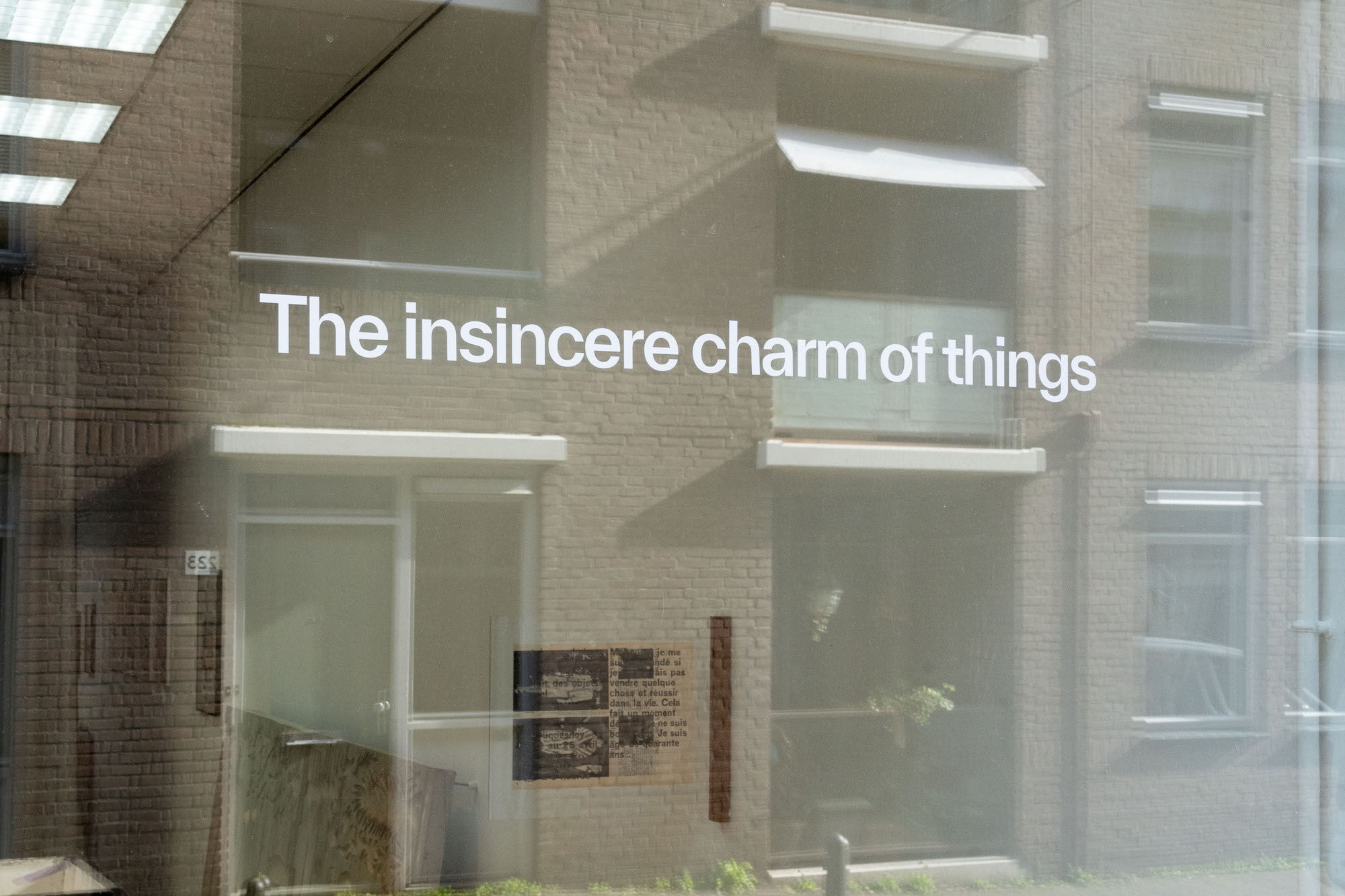





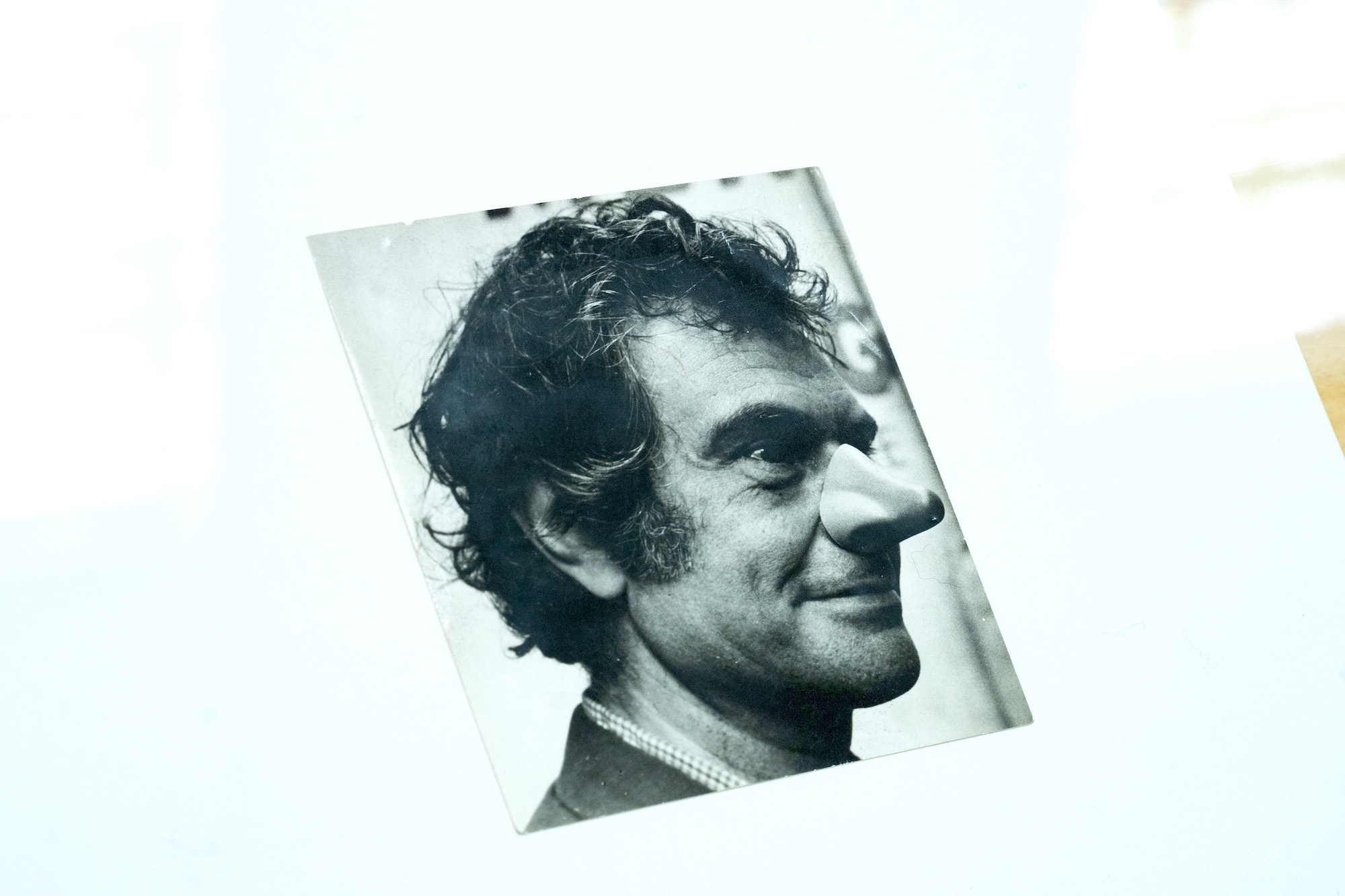



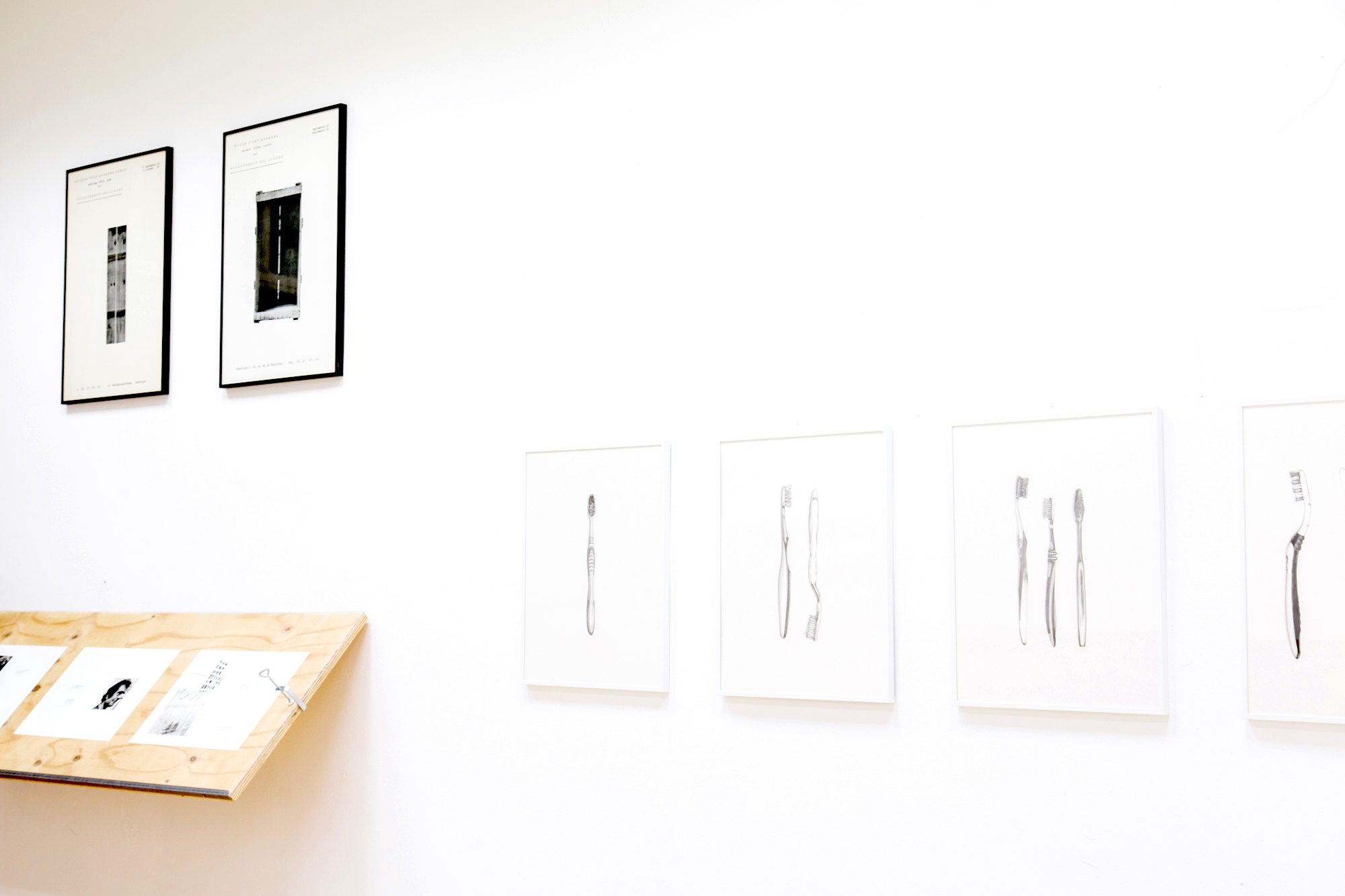
with works by Marcel Broodthaers, Louis Randaxhe and Aline Bouvy,
part of The Promise of Ruin(s), co-curated with Valentino Russo and Philippe Braem.
10.03 – 06.05.2023
The Balcony, nieuwe molstraat 14-A2, The Hague NL
about
With this exhibition the attention shifts on to the contemporary ruin, in which artistic labor and (often) fictional art-historical artifacts blend. Marcel Broodthaers’ (1924-1976) well-documented historical shift from being a poet to working as a visual artist, greatly inspired fellow artists. In 1968, Broodthaers announced that he was no longer an artist and appointed himself director of his own museum, which he first called Musée d’Art Moderne, Département des Aigles. The invitations that he realized together with graphic designer Corneille Hannoset for his first gallery exhibition highlighted the aspects of negotiation that are inherent to artistic labor.
Together with works by Louis Randaxhe and Aline Bouvy, the art-historical representations in the exhibition allude to a magical, mystic realm, where worldly things are seemingly eternal. But as the ravages of time make their way through the surface, that frozen moment of eternity begins to appear more and more opaque.
The exhibition is curated by Arthur Cordier and Valentino Russo, in collaboration with Philippe Braem. Supported by Art Au Centre, Liège, The Mondrian Funds and Stroom Den Haag.
︎link to the documentation
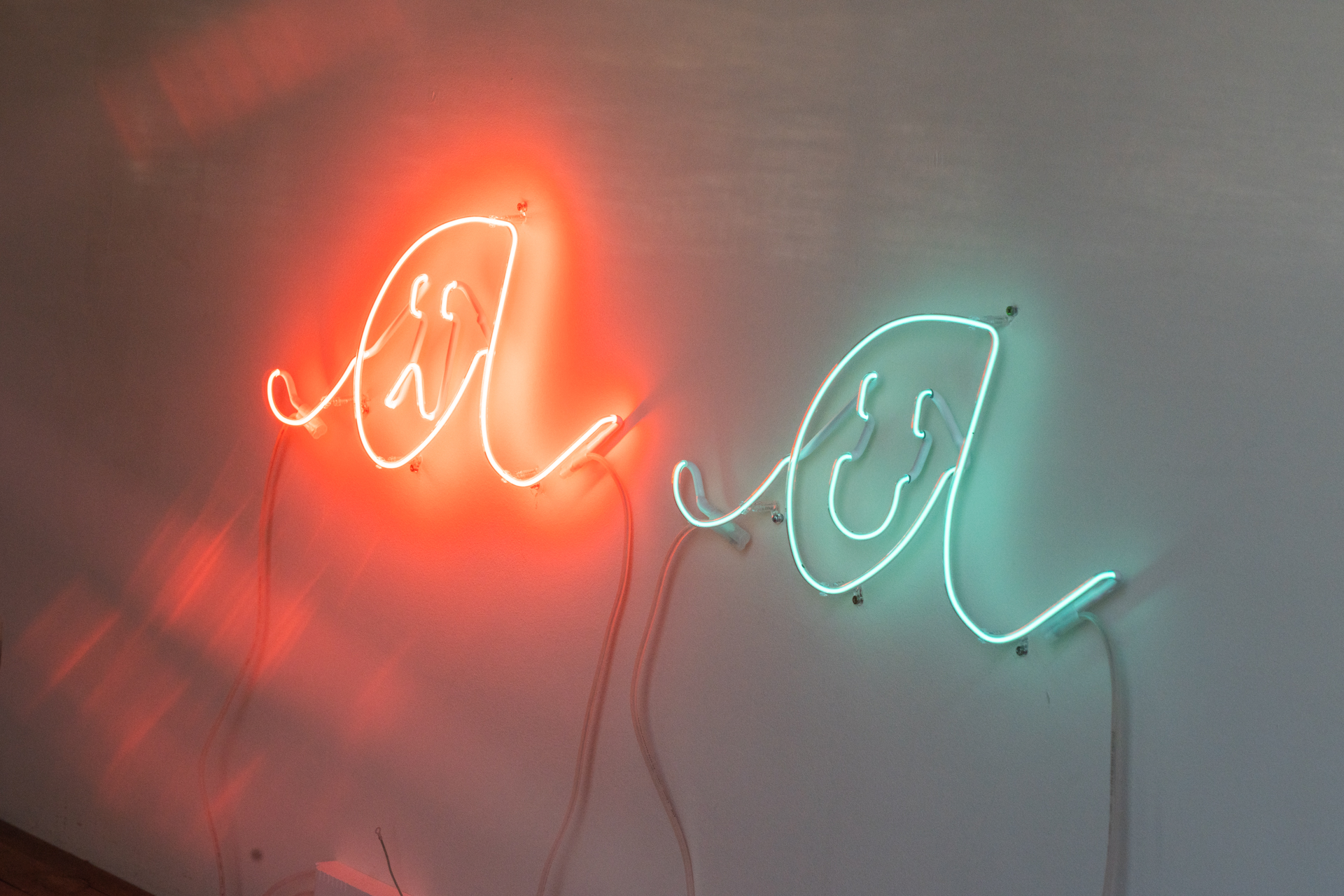

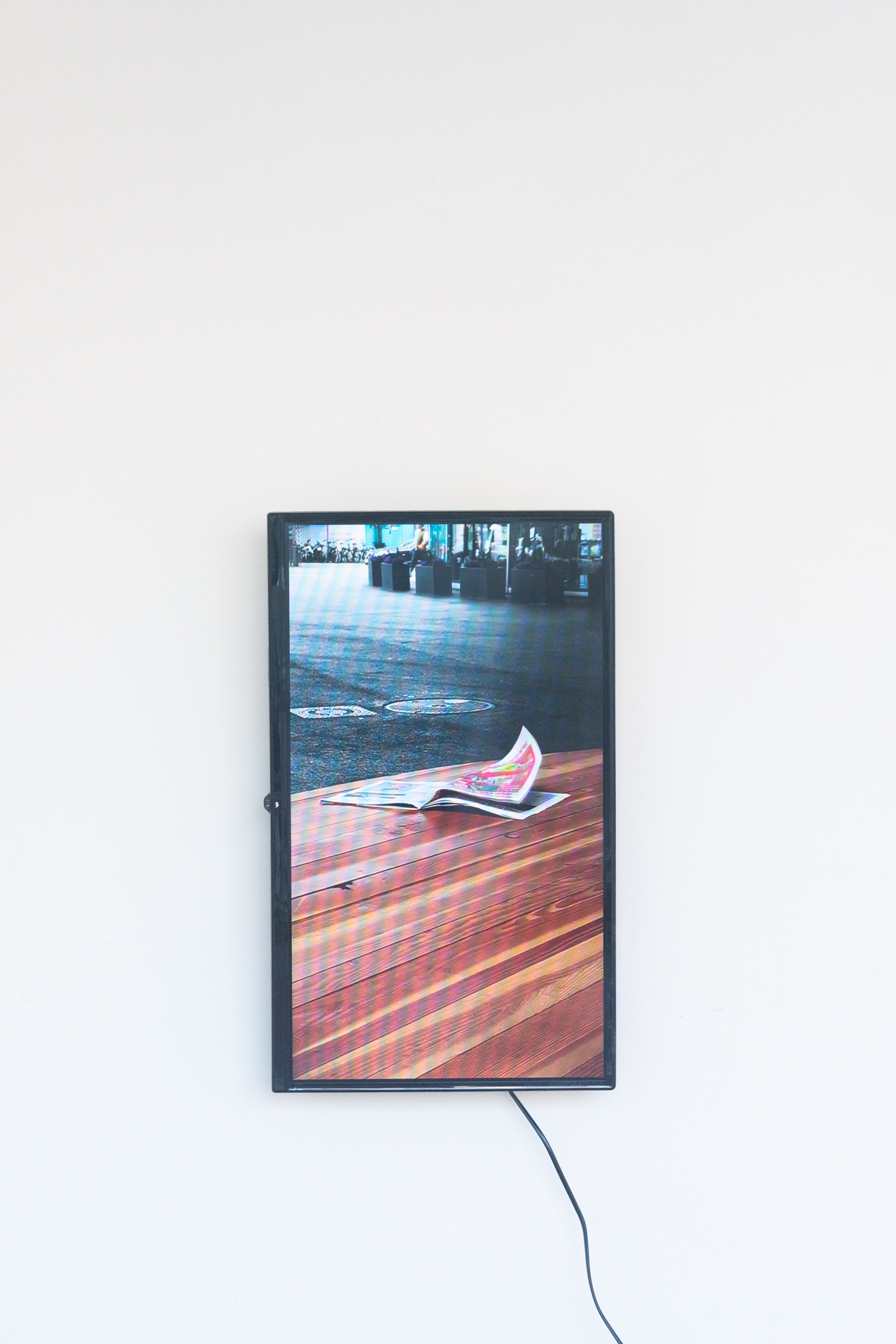
with work by Flaviu Cacoveanu
02.02 – 30.04.2023
Art Au Centre #11, Place des Déportés 5
exhibition route in the city centre of Liège BE
Flaviu Cacoveanu se présente comme étant un artiste Con&Temporaire. À travers sa pratique interdisciplinaire, ses œuvres se développent aux confins de la pho-tographie, de la vidéo, de l’installation et des interventions performatives.
Sa pratique artistique est une promenade dans notre quotidien, le plus souvent dans nos espaces urbains. Grâce à des observations à première vue nonchalantes, mais pointues et remplies d’humour, l’artiste met en lumière les traces laissées par des habitants discrets de la ville, souvent des insectes ou des détritus qui brossent un portrait de l’artiste – comme un reflet de son environnement. Flaviu Cacoveanu puise souvent son inspiration dans son téléphone portable qu’il décrit comme un téléphone d’artiste : un espace où il prend des notes et gribouille des idées. Ses œuvres sont distinctives et intuitives.
L’artiste se sert du langage et joue avec les mots et les situations pour faire de ses idées formelles et conceptuelles une (auto)critique de l’état actuel de notre monde. Les œuvres de Flaviu Cacoveanu ont récemment été exposées à la Parliament Gallery de Paris, à la Ivan Gallery de Bucarest et à la Biennale Art Encounters 2021 de Timisoara.







with works by Frank Halmans, Wouter Huis and Daisy Madden-Wells.
part of The Promise of Ruin(s), co-curated with Valentino Russo.
25.11.2022 – 25.02.2023
The Balcony, nieuwe molstraat 14-A2, The Hague NL
With the third chapter of The Balcony’s inaugural program The Promise of Ruin(s), the attention shifts on the domestic space that, far from being a safe place, is not exempt from the grip of capitalism. From vacuum cleaners to vinyl players, kitsch and decorations are a mirror of ourselves and our identity, free subjects in the free market. To quote Richard Hamilton: “Just what is it that makes today’s homes so different, so appealing?”
Dust is often seen as dirt, an unwanted sign of passing time, a contamination of boredom and decay upon the world of the living. In the words of cultural historian Celeste Olalquiaga:
“Dust is the most tangible aspect of the new historical time, a thin patina of shattered moments remaining after the frenzy of multiplication has subsided or moved away.”
Walter Benjamin, in his writing Dream Kitsch (1927) associates vanished dreams with the colourless state of dust covering forgotten objects. Dust is the added value of time upon matter, where “faded dreams and touch intersect”.
Boekenkaststofzuiger & Burned clock IV by Frank Halmans
In his work Frank Halmans (NL, 1963) often examines the domestic world and sees a home as a place where life oscillates between a public and a private sphere. Frank examines how we as humans inhabit these two different areas. In his recent body of works – that he wishes to further develop at The Balcony – the vacuum cleaners are usable by visitors. Dust accumulates inside the work, while keeping the exhibition space seemingly spotless. Knowing that dust in homes is composed of about 20-50% dead skin-cells, is the dust we produce and ultimately discard a reflection of our identity, the places we live in?
Untitled, setting, 2022. Part of 'Due to maintenance activities, these rooms are temporarily closed' by Wouter Huis
Wouter Huis (NL, 1974) shifts the limits and scope of mental and architectural space, the borders of private and public space, the real and the fictive; he delves into the elusiveness of almost-invisible ‘random’ details, such as the ambiguity of decaying exhibitions, spaces standing-still.
In the exhibition Wouter presents a vinyl whose track has no sound recorded, and while the stylus keeps running on the vinyl’s microgroove, in loop, it collects dust which produces very specific sound effects. For the duration of the exhibition the record thus plays the sound of collected dust. The space of the space. The needle sound-cracks over the dusted vinyl compose the soundtrack of the work: a crescendo of particles to hear over the coming weeks.
Sparks Fly & The Heavenly Fight Cloud by Daisy Madden-Wells
Daisy Madden-Wells (UK, IE, 1922) works with objects and ornaments that have been elected over millennia as representatives of hopes, dreams, wishes and status. Her research explores the Paganistic worship of idols, Agamben’s theory of the profane, kitsch as a site of class warfare and the genealogy of the lion as a heraldic pin-up of choice. It is surprising how the artist’s work fits in this exhibition. In fact, dust and kitsch are closely related, as introduced earlier. Working classes excel in the art of displaying architectural ornaments, often mass-produced, as an homage to handcraftship.
For the exhibition’s new work, Daisy Madden-Wells explores window coverings, net curtains and nicknacks, the archetypes of kitsch in homes of a certain age. Facsimiles of aspirations gathering dust, hiding things slightly, peeping out from under or behind. These elements become an extension of her previous stained glass works but always more kitsch, transient and slightly melancholic.
︎link to the documentation
2022




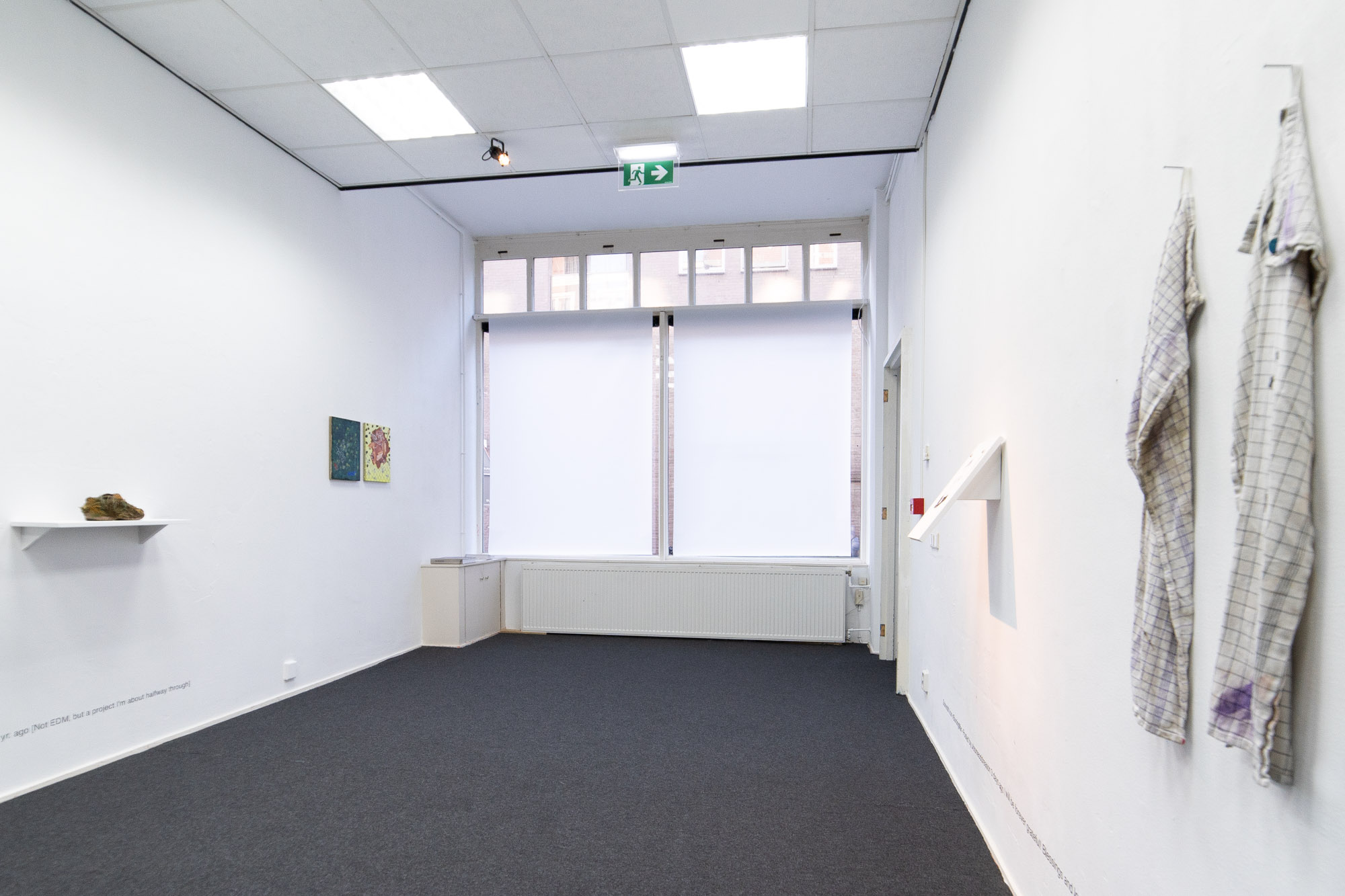



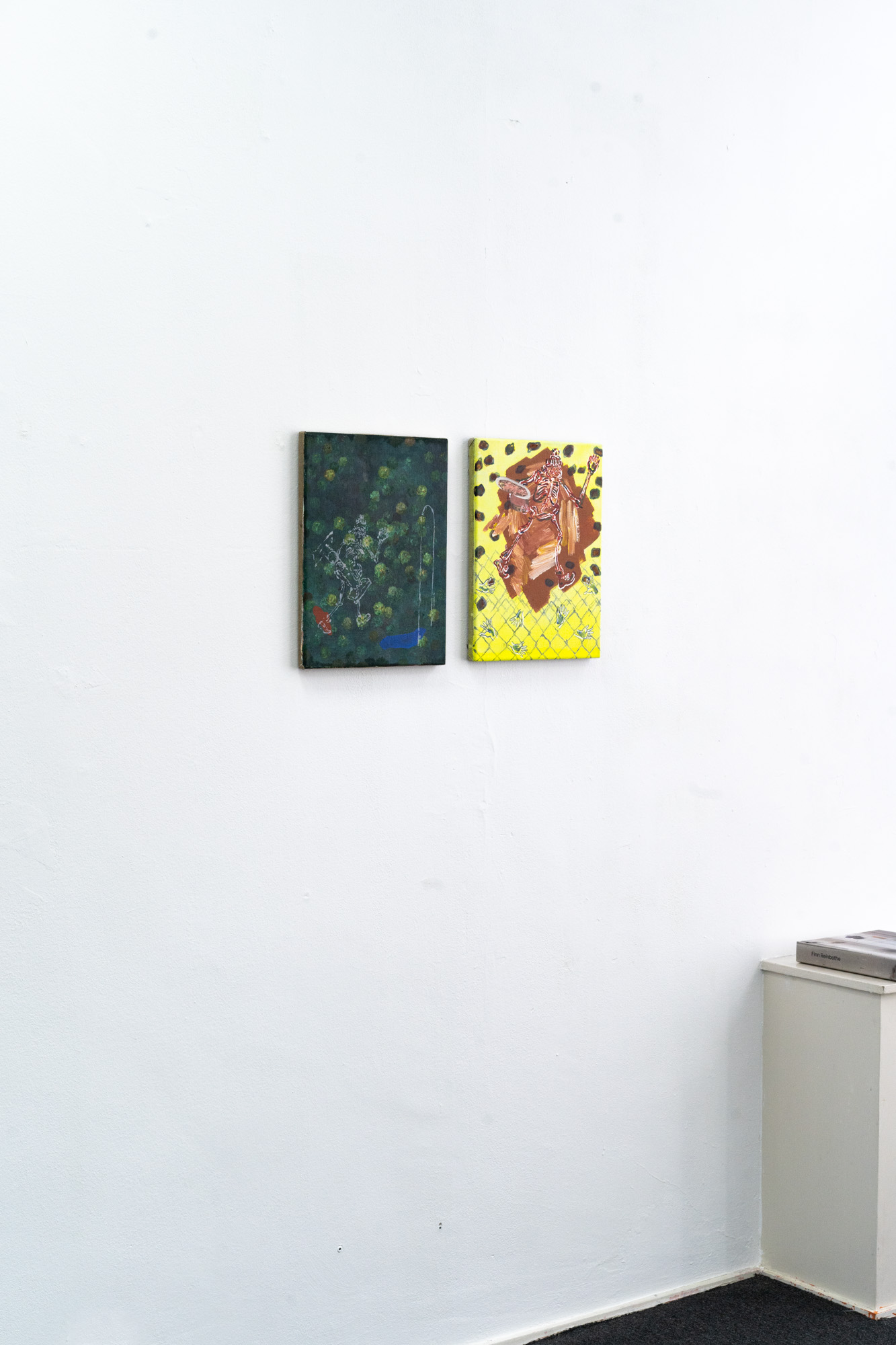
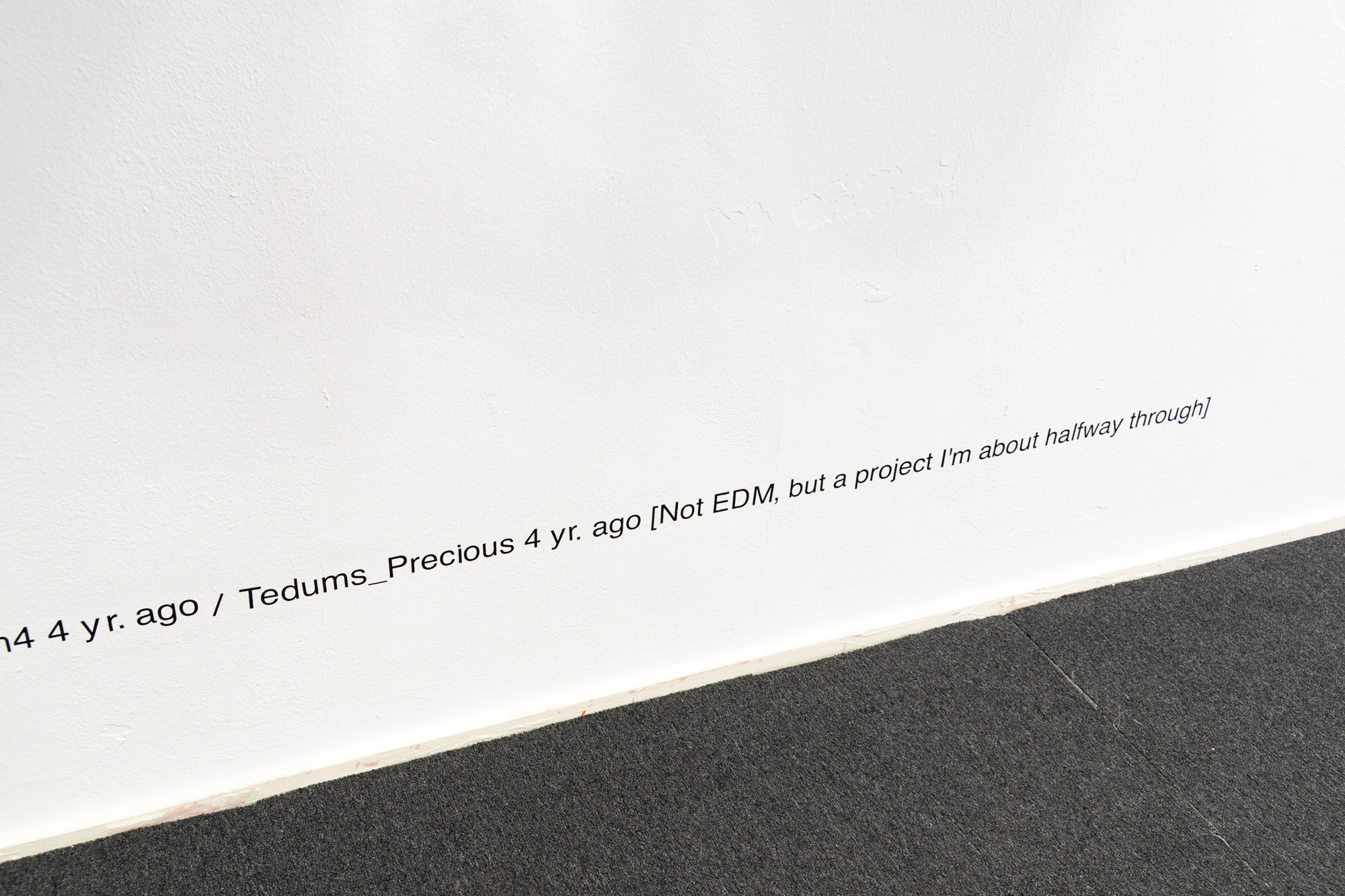
with works by Lina Viste Grønli, Finn Reinbothe, Runo B, Tom Bachtell and Jia Jia Zhang.
Curated by Theodor Præst Nymark Jensen, Sofus Keiding Agger. Supported by The Balcony.
23.09 – 30.10.2022
“The Loading” tackles the aesthetic treatment of history and information. In an era of continuous streams of voices floating through media, information keeps dissolving itself and blurs the historical lines of authenticity. Whilst loading the ship that carries us around the globe as tourists on the internet, we dive into the many shades of information floating in the landscape we live in.
The exhibition at The Balcony is part of the cycle “Portals”, initiated by the Copenhagen-based collective Salon75 in collaboration with a selection of artist-run platforms across Europe; among which Berlínskej Model, Prague; GOMO, Vienna & Heit, Berlin.
Following the invitation to exhibit at Salon75 in July, The Balcony gave carte blanche to the Danish collective to curate an exhibition in The Hague. For The Balcony, this collaboration continues the series of exchanges initiated last year with SEA Foundation, Tilburg, which took place in September 2021.
︎link to the documentation
2022
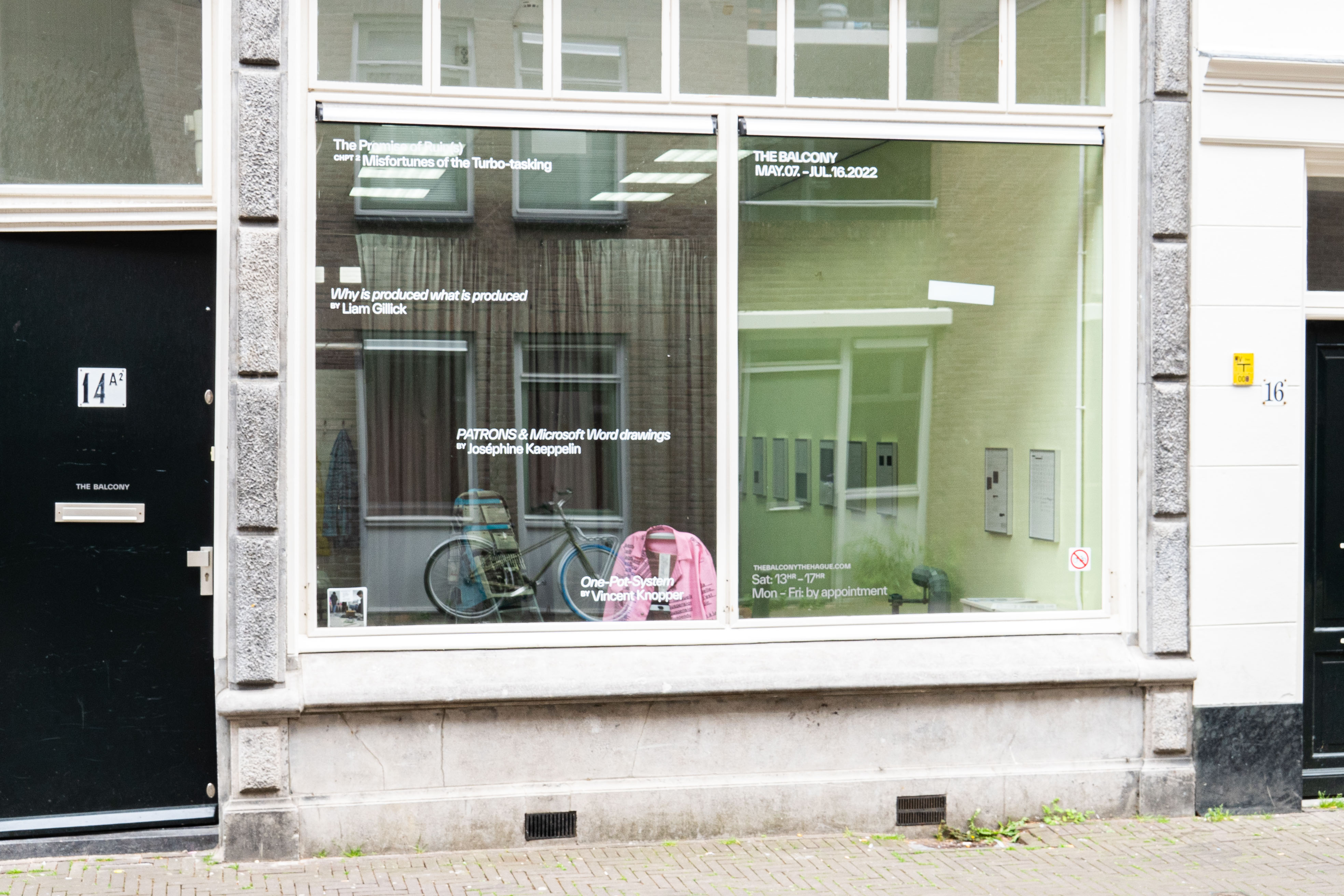
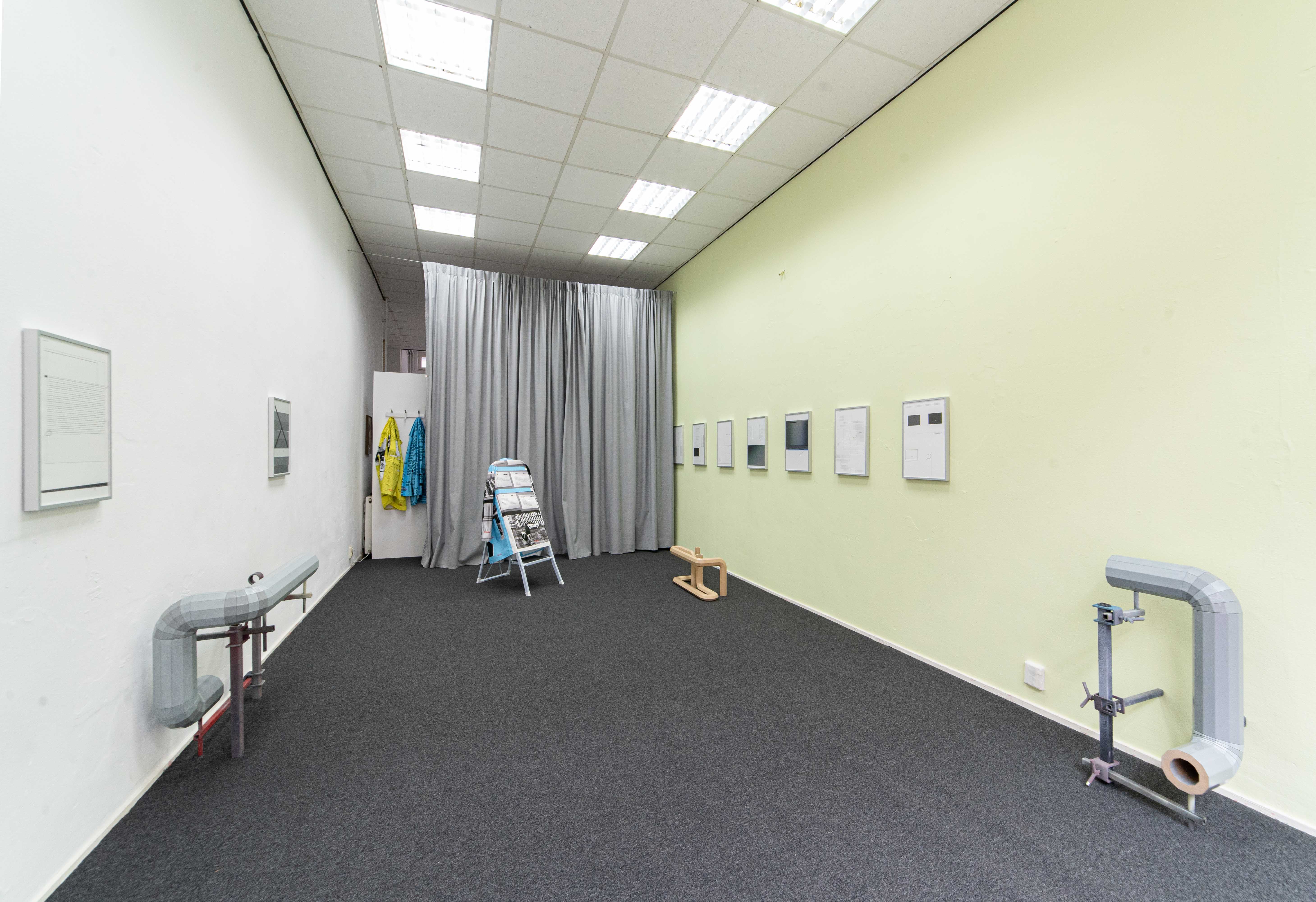


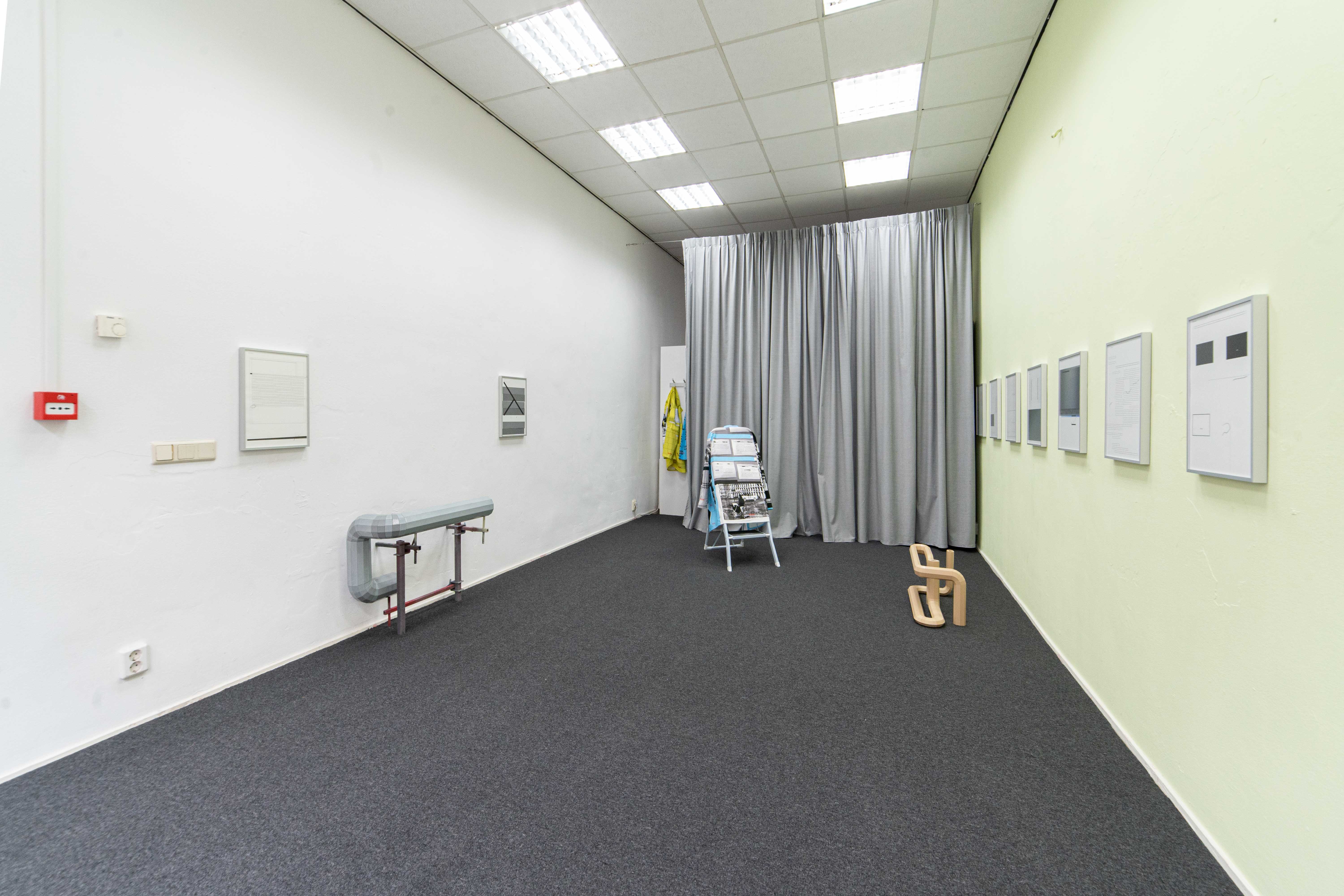
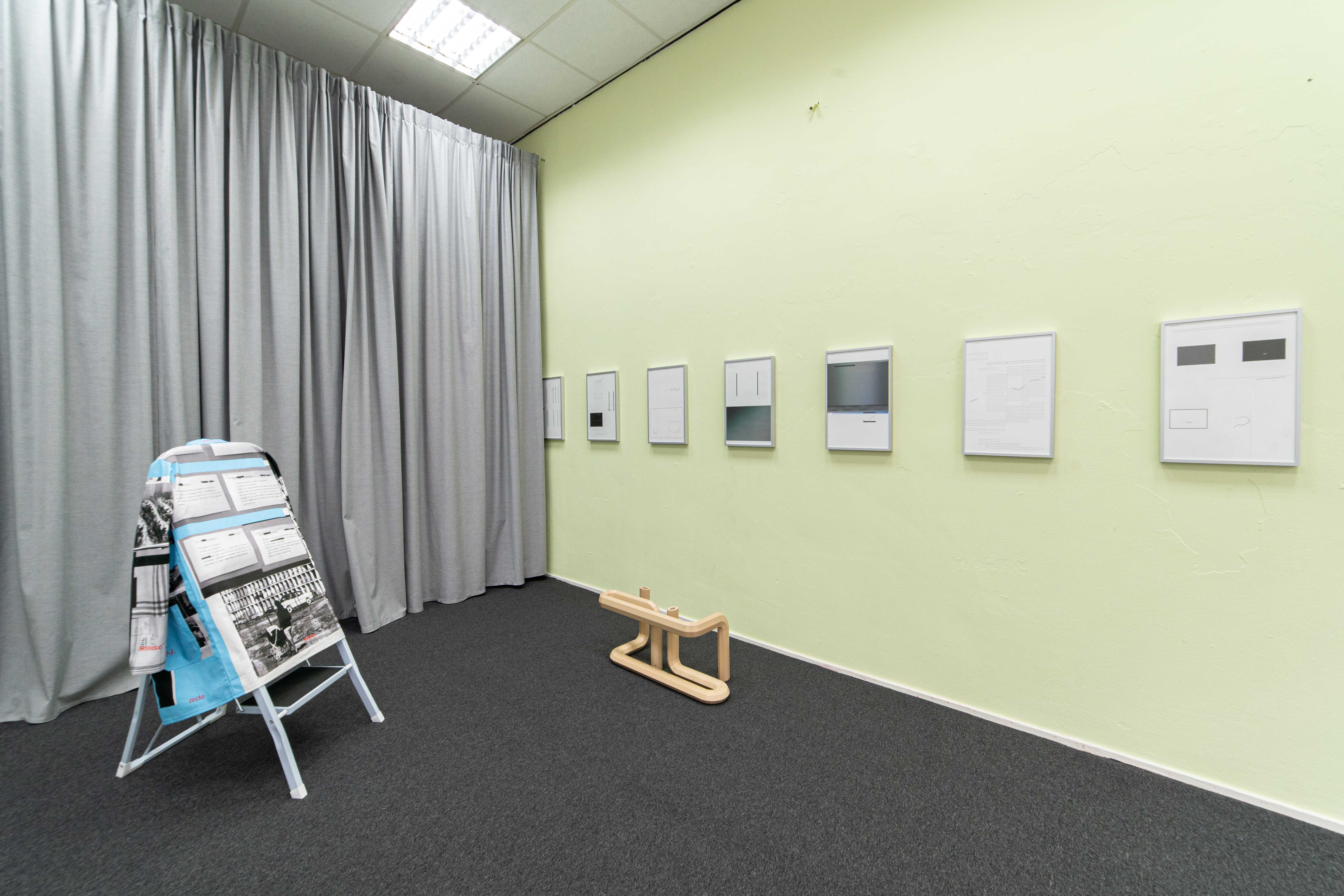
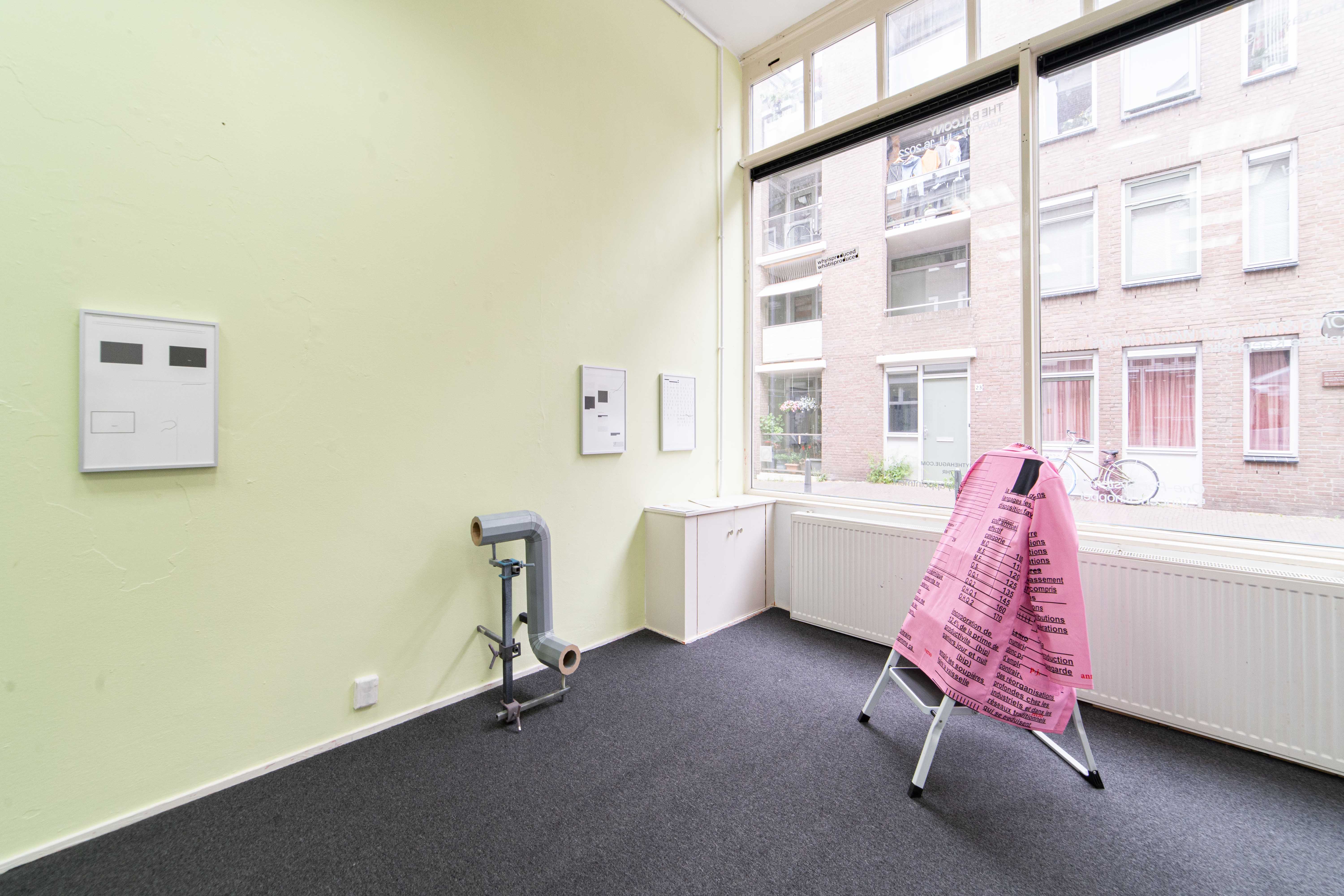
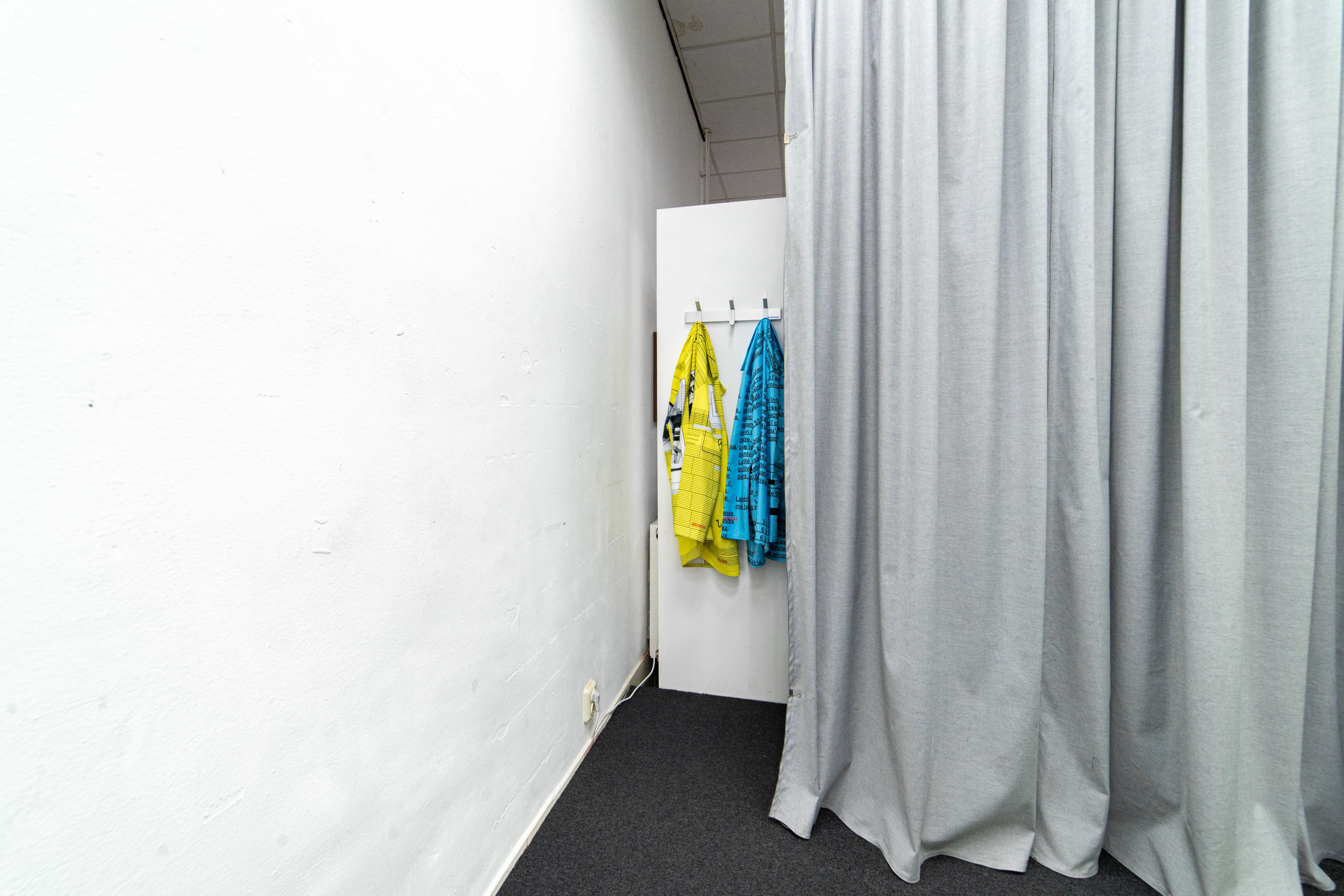
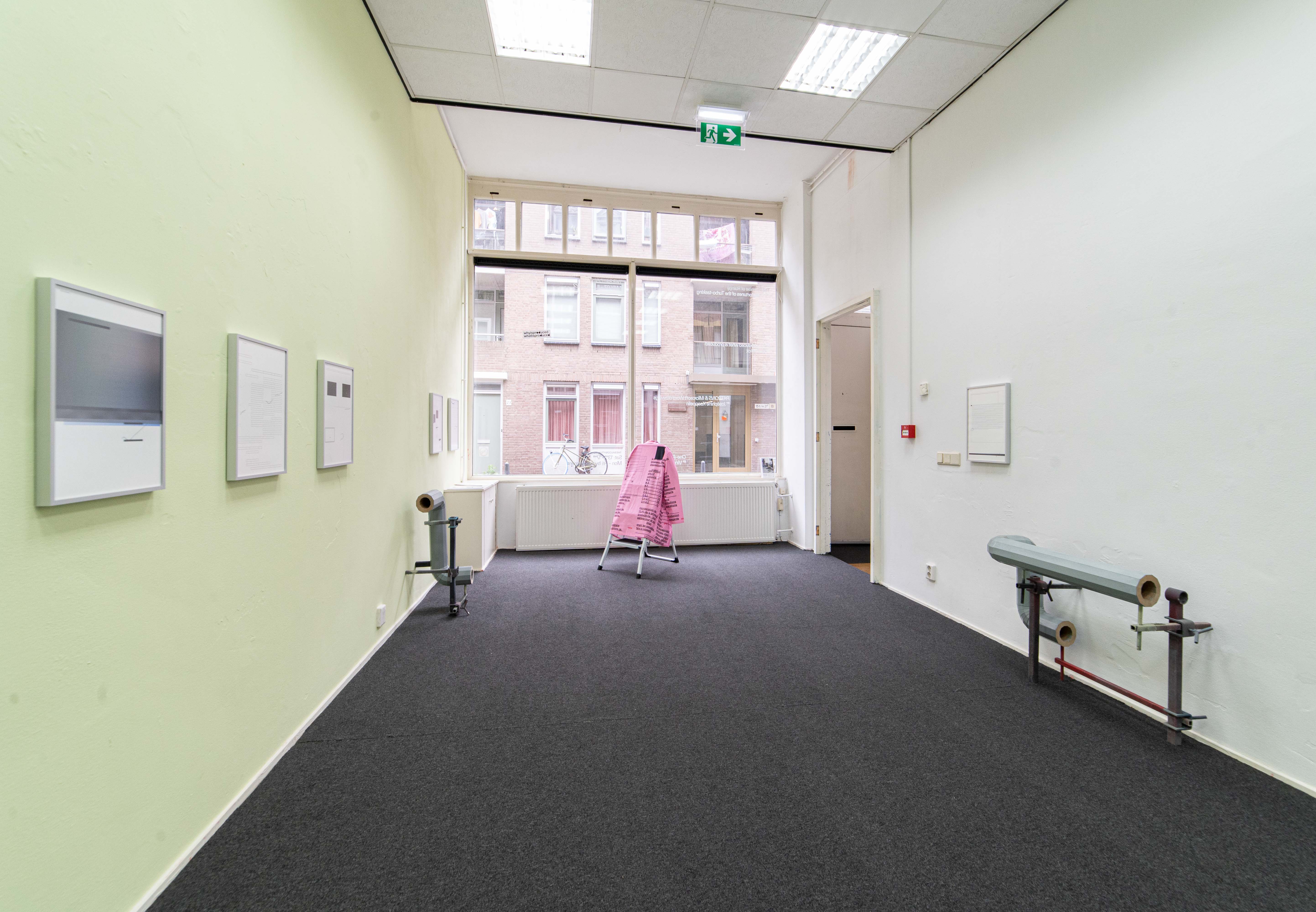
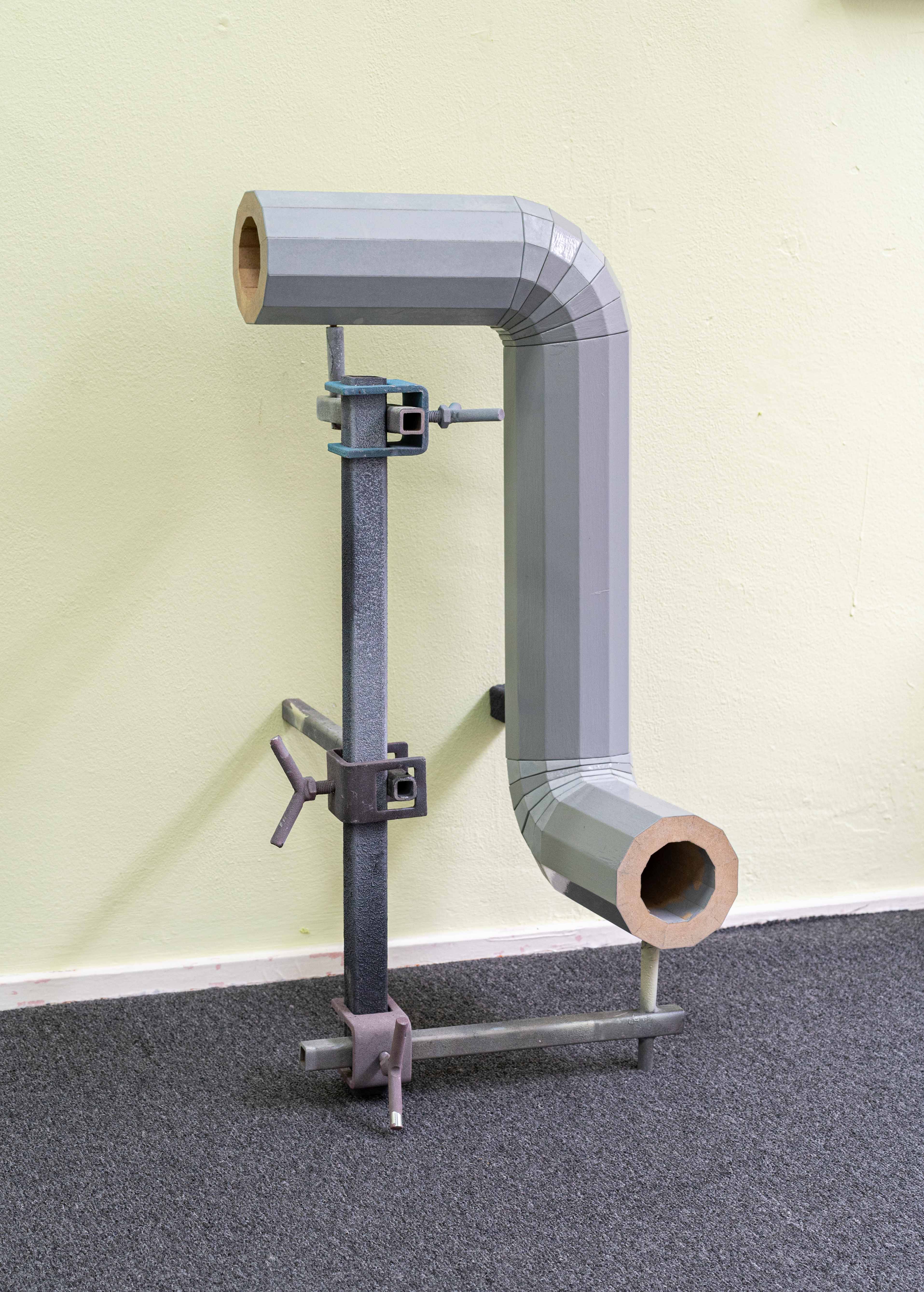
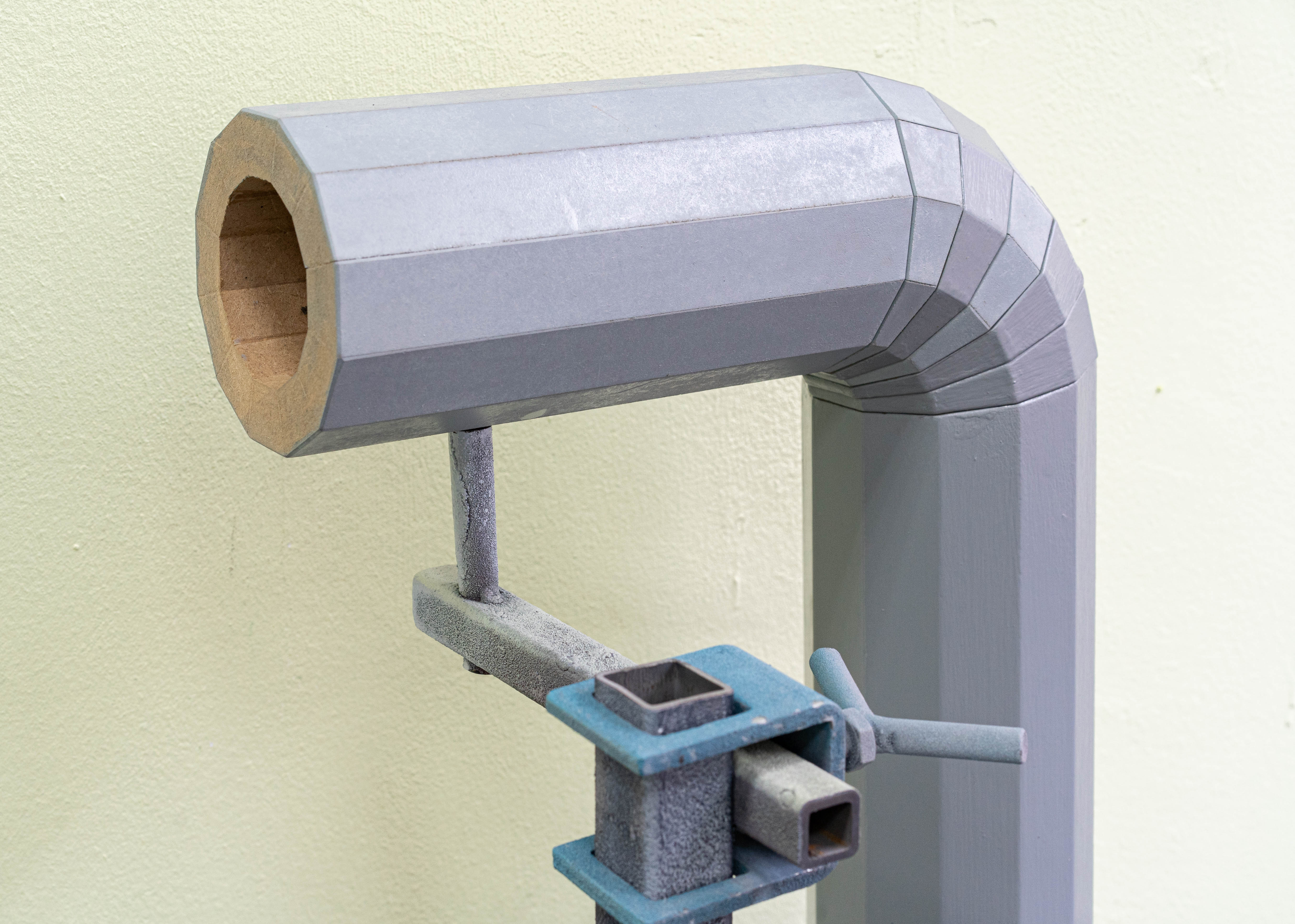
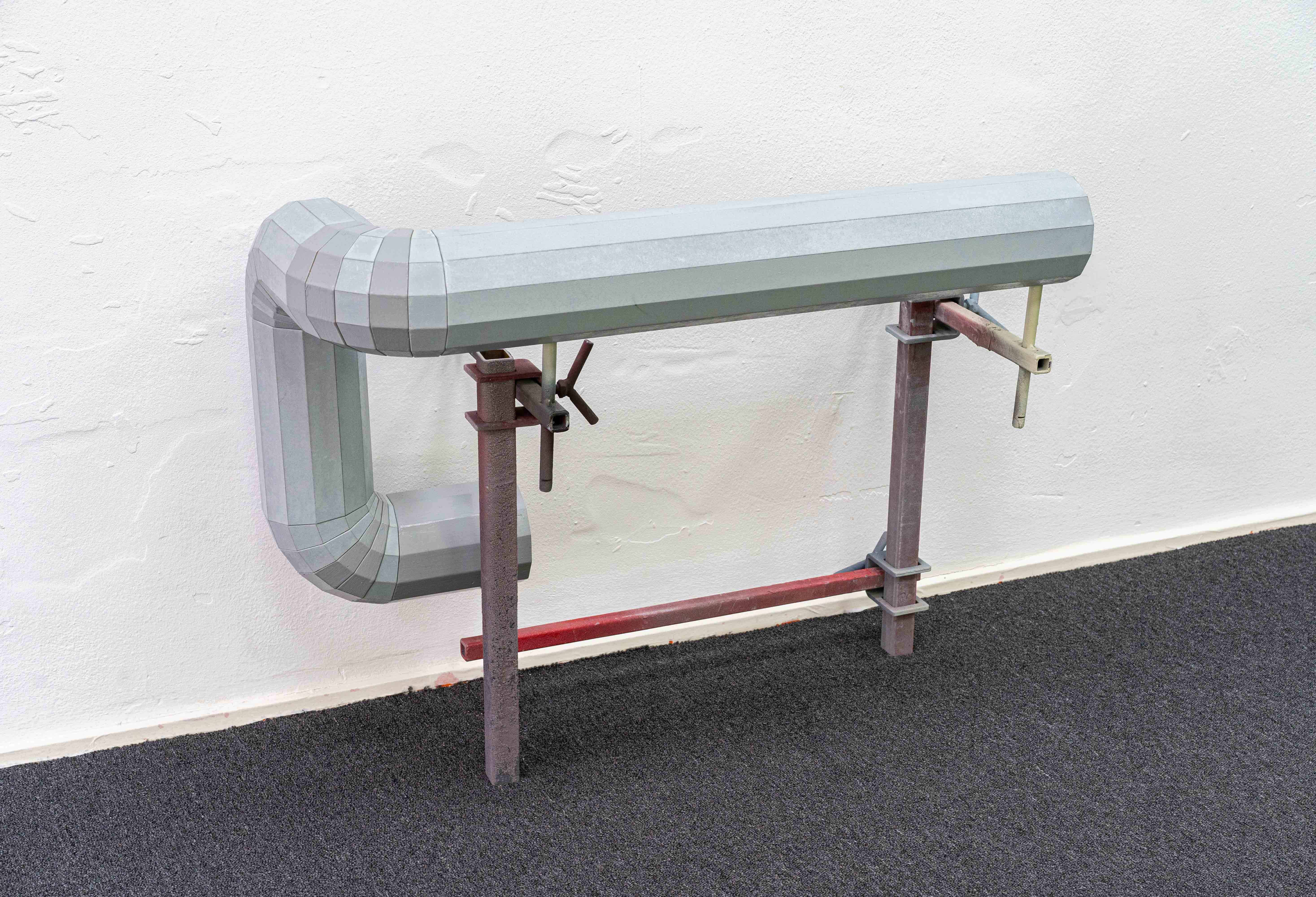
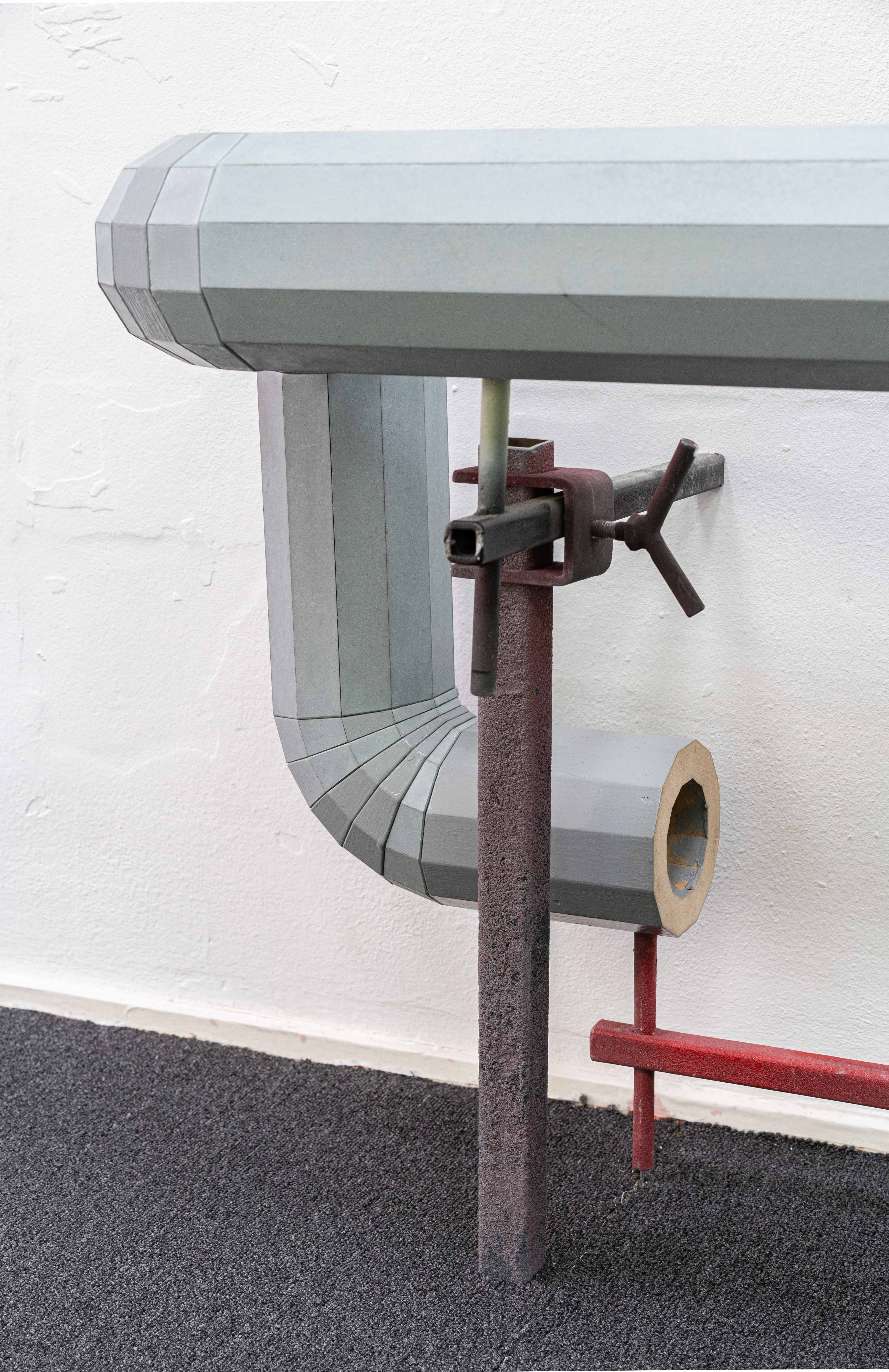
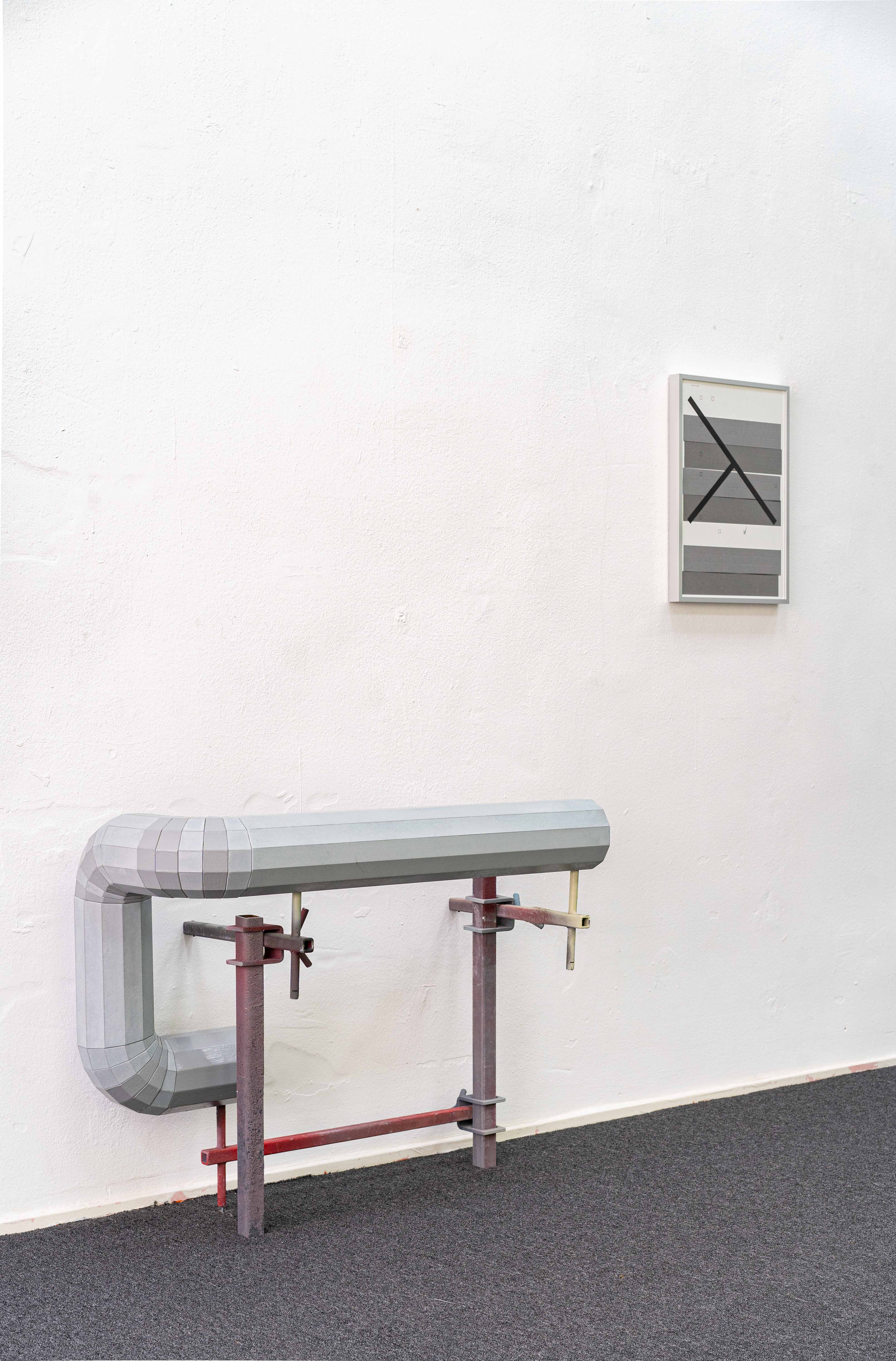


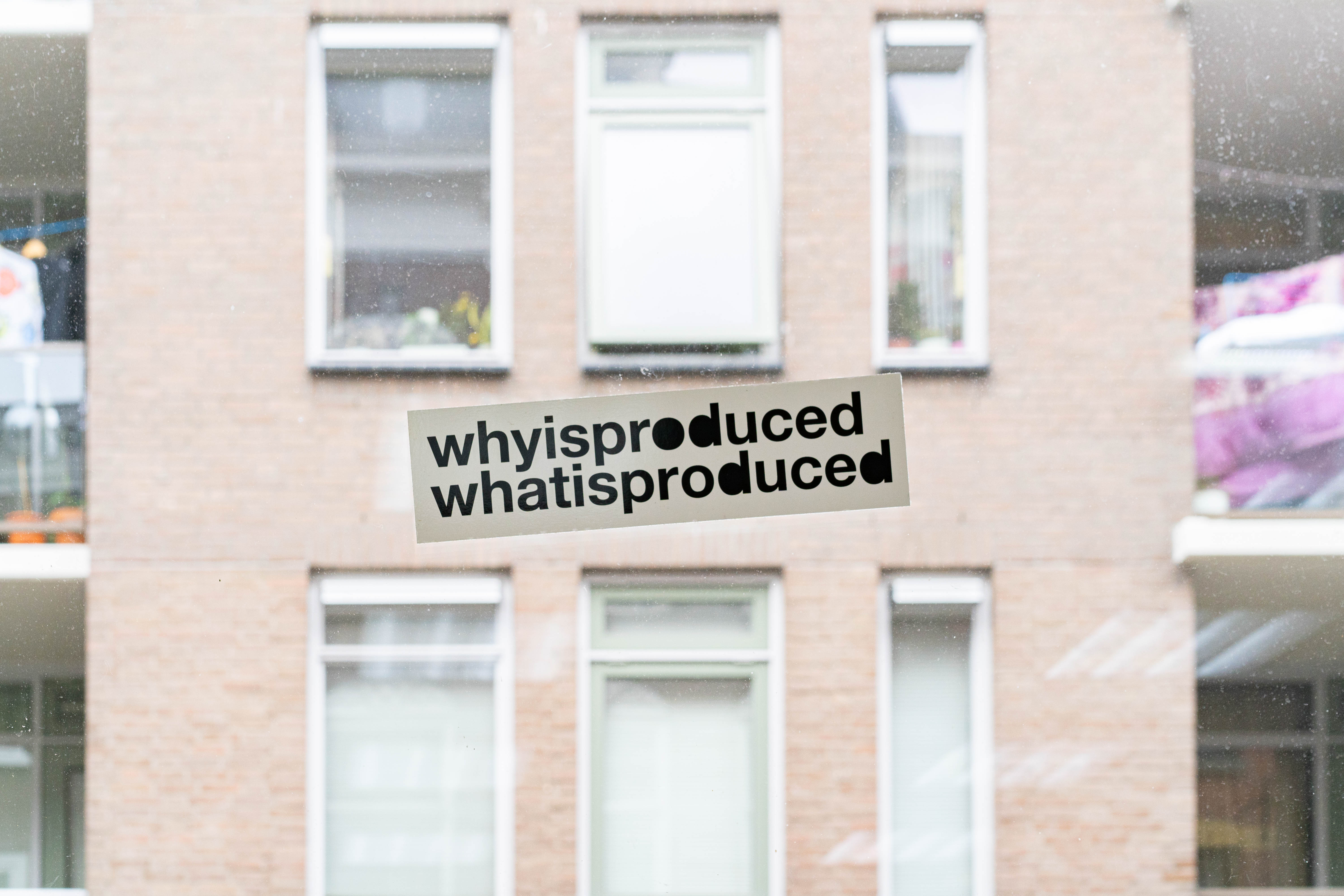
with works by Liam Gillick, Joséphine Kaeppelin & Vincent Knopper,
part of The Promise of Ruin(s), co-curated with Valentino Russo
07.05 – 16.07.2022
The Balcony, nieuwe molstraat 14-A2, The Hague NL
The second chapter of The Promise of Ruin(s) looks at how artistic labour fits within the realm of the economic functioning of society in which case the multiplicity of identities is a strategy for artistic freedom, opportunities and sometimes economical self-defence. The overlaps between leisure and labour are topics that run through our program and this exhibition in particular.
Both Joséphine Kaeppelin and Vincent Knopper alternately describe themselves as makers, builders, renovators, service providers, designers, [...] ultimately as artists. This peculiar twist helps to acknowledge the variety of skills involved in ones practice: technical as well as organizational, craftmanship and entrepreneurial spirit. The multiplicity of identities is a strategy for artistic freedom, opportunities and sometimes economical self-defence. The intersection between these works shines upon the commodification of the living, the nurturing of automatisation and the necessity for observation. The overlaps between disincarnated office work, technical knowledge and artistic labour are topics that run through our program and this exhibition in particular.
The work by Liam Gillick, as a sticker, already embodies the potential of a subversive action in urban space. Sticker-bombing as an act of opposition to the establishment, in between juvenile vandalism and a more conscious political critique. Then, an apparently simple question such as that of its title, effectively summarises the research at the core of Joséphine and Vincent’s practices, in which production becomes a way to establish power relations, social order and control, that the artists intend to hijack.
Gillick’s work ranges from small books to large-scale architectural collaborations. His practice exists in a constant tension between his formally minimalistic works and his critical approach through writing and the use of text, questioning the role that art may play in society.
PATRONS & Microsoft Word drawings by Joséphine Kaeppelin
PATRONS is an artist edition consisting of 13 work clothing which patterns are designed from documents that the artist consulted at the National Archives of the World of Work in 2019 in Roubaix (FR). Inventories of factory equipment, meetings report, books of demands, letters, handwritten notes, corporate magazines, positions’ descriptions, surveys, brochures and communication campaigns. During her investigation in the archive center, joséphine collected the ways of saying what one does, paying particular attention to the words of women.
The A3 drawings are made with Microsoft Word. Joséphine hijacks the initial function of the software. No files are kept. She works with the characteristics of the word processing tool : combining signs, tables, graphical elements, and choosing precisely the print settings. Each drawing results in several prints as several drawing gestures. By drawing this way, she acts within and against a standardized system that is this software.
Joséphine Kaeppelin is an artist and intellectual and graphic service provider - a status she self-assigned in 2017. This figure of provider allows her to go on the field and act in certain contexts (company or institution). She carries out missions whose main objective is to heckle the minds. During these missions, she collects ways of saying, gestures, signs and words composing the raw material of the objects she creates in response to a situation. She lives and works in Heerlen (NL).
One-Pot-System by Vincent Knopper
Vincent Knopper presents two new sculptures under the umbrella-title 'One-Pot-System'. The title originates from a lacquer-type which is invented by commercially-driven crafts. In Dutch the lacquer is also known as 'doorwerklak', which literally translates into 'keep-on-working-lacquer'. These types of commercialised and standardised materials and their turbo-qualities become methodologies for Knopper to make his works. In the two sculptures in the exhibition Knopper combines these materials and techniques until they become counter-efficient, in order to question their effectiveness. For example, in one of the works Knopper approaches drying times of different lacquers as a timeframe for the production of the sculpture.
Vincent Knopper is a visual artist and he lives and works in Amsterdam. He describes himself as an arthandler, artist, carpenter, designer, furniture maker, handy-man, painter, renovator, sculptor, woodworker. Through these descriptions he aims to articulate the similar yet distinctive faces of making, use of materials, references and labour that represent the core of his practice.
︎link to the documentation
2021-22

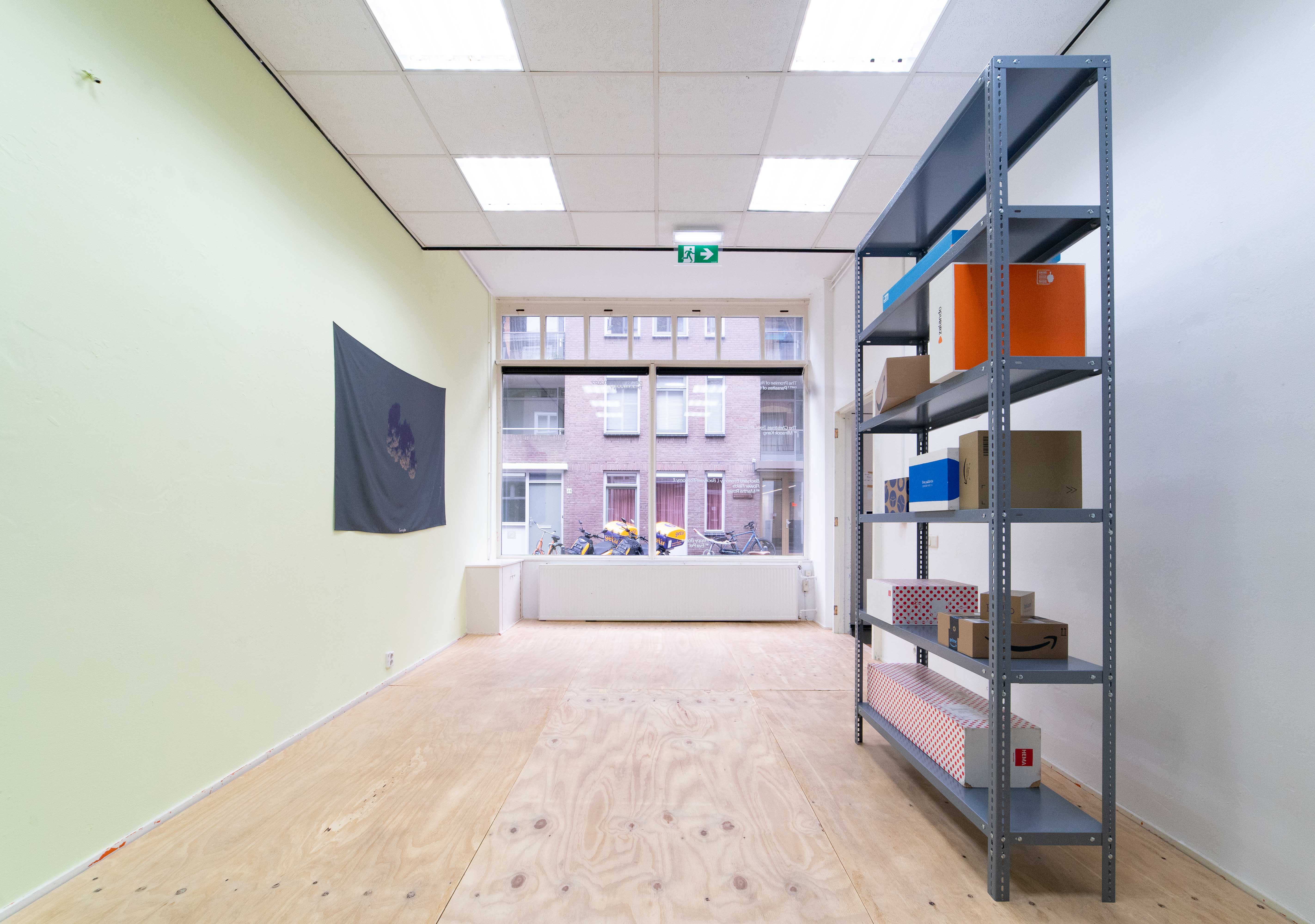

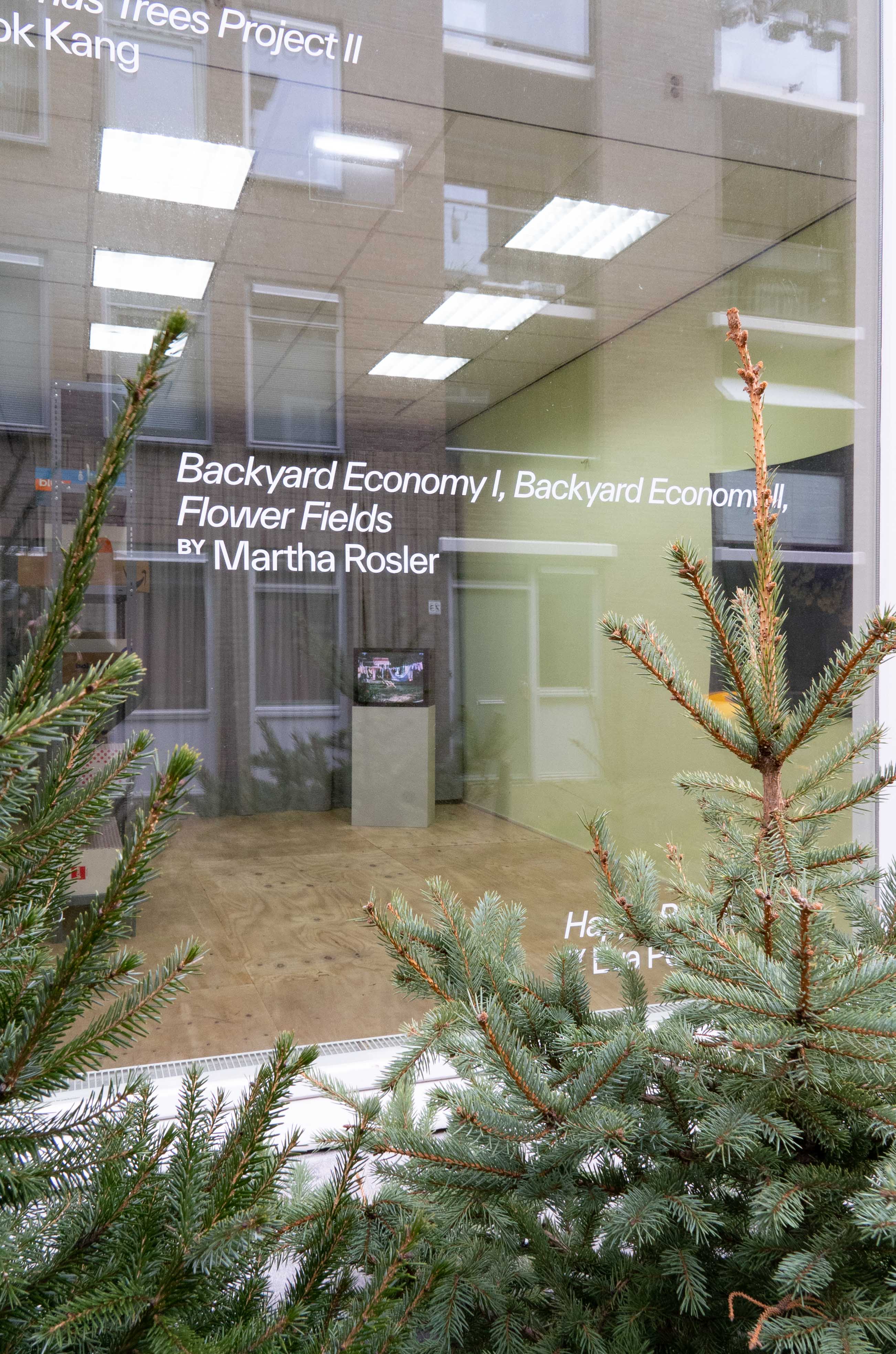
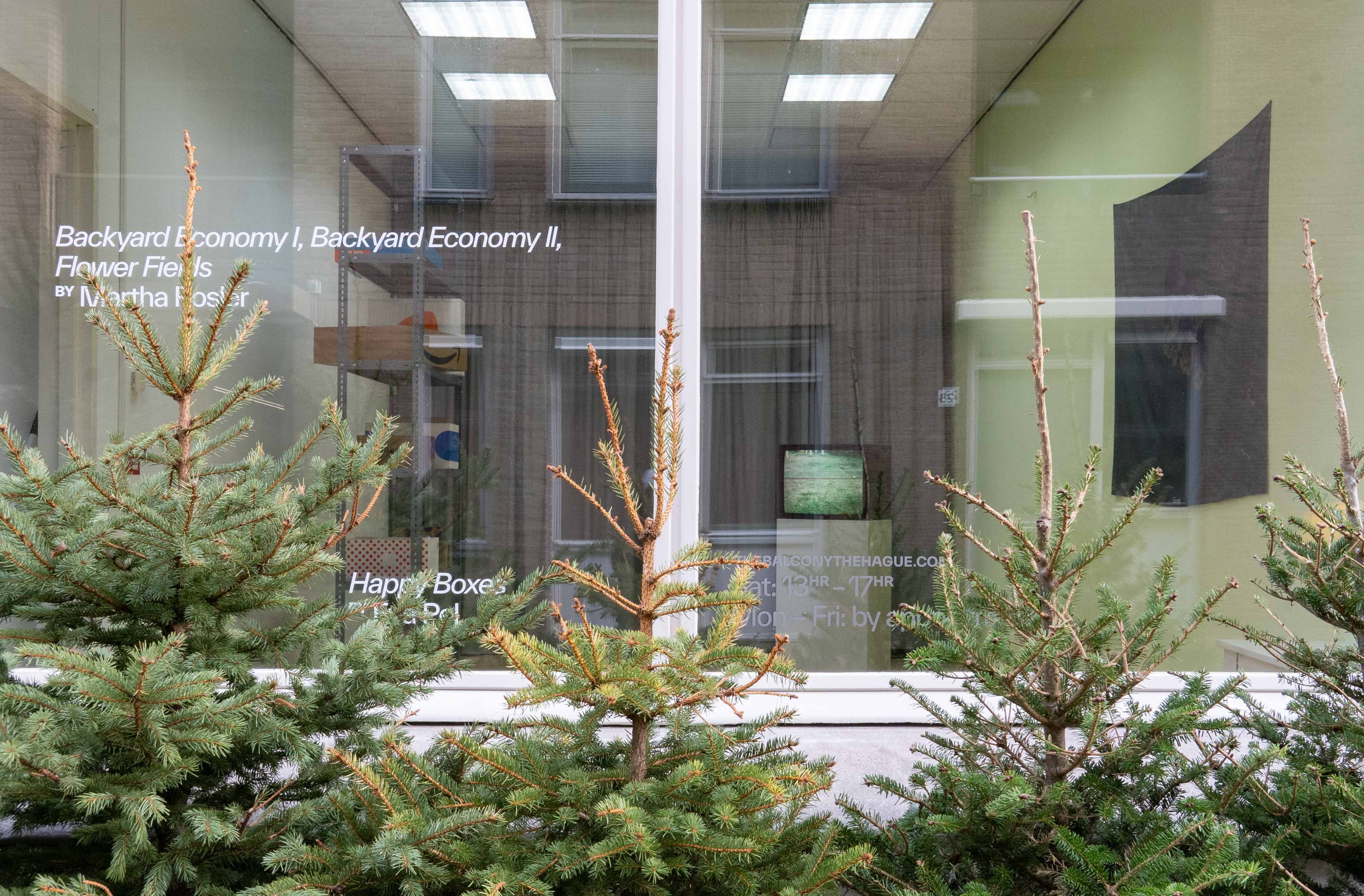
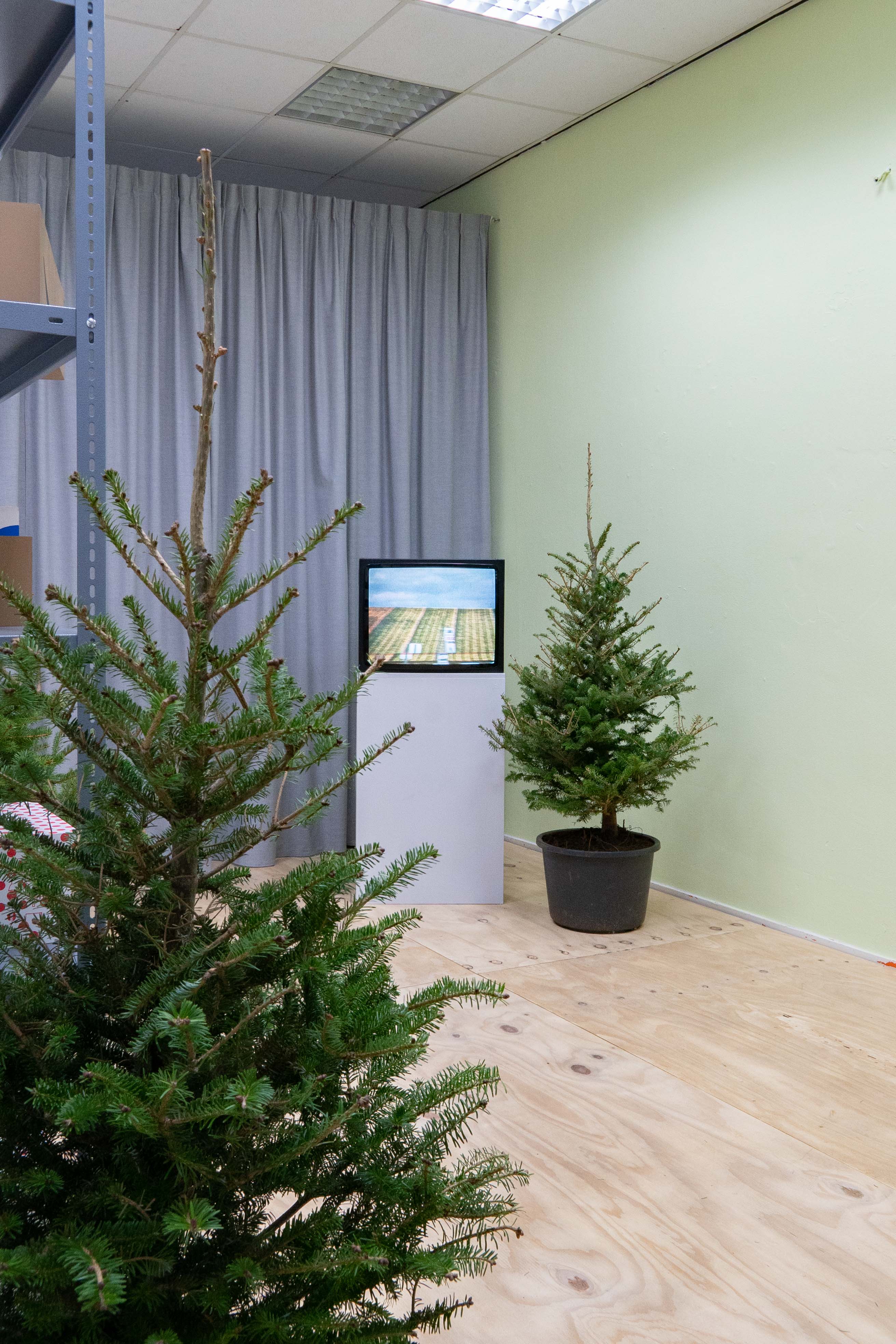
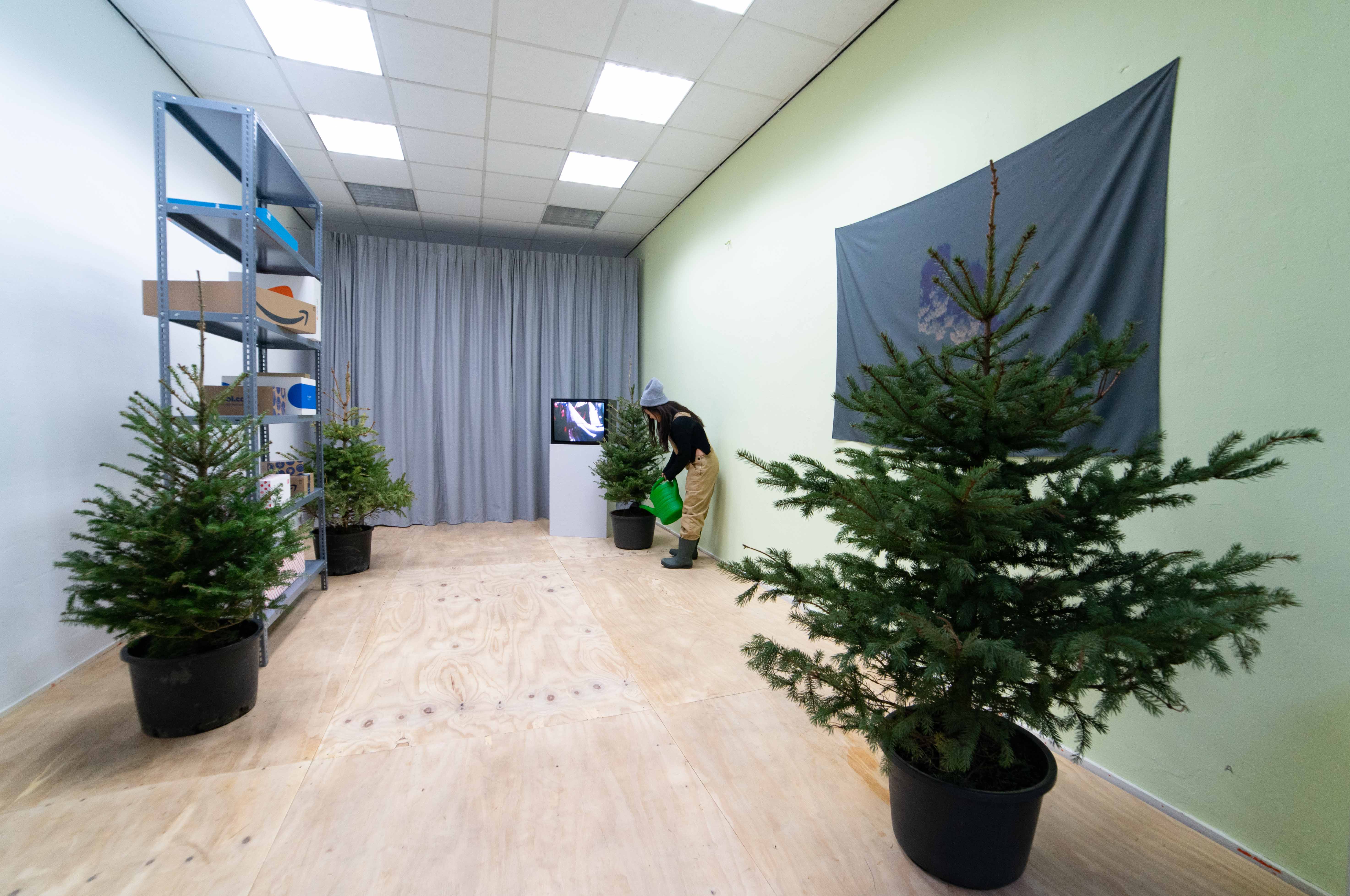
with works by Minsook Kang, Martha Rosler and Eva Pel,
part of The Promise of Ruin(s), co-curated with Valentino Russo
18.12.2021 – 20.03.2022
The Balcony, nieuwe molstraat 14-A2, The Hague NL
‘Parasites of the Imaginary’ is the first chapter of the program titled The Promise of Ruin(s). It reflects on how the current economic system permeates our everyday actions in such tenacious and subtle, parasitic modalities
Minsook Kang is an artist based in South Korea and The Netherlands. Her practice looks at how capitalism focuses on producing, selling and efficiently discarding. Consumption is all about speed and functionality, whereas Minsook’s practice is all about care, nurturing and slow paced displacement.
In her work titled The Christmas Trees Project I: The Christmas Trees Island (2016-2018), Minsook Kang undertook to save discarded Christmas trees for two years. In the process, she was wandering in search of a safe place to replant her trees, and eventually she replanted them on an undisclosed island. At The Balcony she presents ‘The Christmas Trees Project II’ (2021-ongoing). The exhibition starts with a screenshot from Google Maps of the island where the trees were transplanted in 2017.
Then, she will rescue trees that are discarded as soon as the new year starts. The Balcony will become a temporary shelter to rescue trees and, at the same time, her (in)visible everyday gestures will be actively shared with the audience. Afterwards, the trees will be moved to a new location, and a new intervention will take place in the exhibition space.
Eva Pel is an artist living and working in Amsterdam and educated as human geographer and artistic researcher. Her work shifts between political engagement and subtle mediation. She employs her interest in how social behaviour is affected and changed in our everyday life, a life that is influenced by our shared space, digital and physical.The work by Eva Pel looks into the relation between e-commerce and the rapid disappearance of small shops in city centers. The combination of large-scale shopping malls and online shopping is greatly affecting local shop owners. Houses are being demolished and inhabitants expropriated. Communal structures fall apart. Through these observations, Pel develops a series of boxes inspired by online stores such as Amazon, Bol.com, Zalando, Coolblue or Hema. The boxes, made of wood, are highly accurate hand-painted replicas. At first sight the delivery boxes look similar to disposable cardboard packages. Yet from close-up they are the product, to be kept instead of disposed.
Martha Rosler was born in Brooklyn, New York, where she lives and works. Articulated with deadpan wit, Rosler's video works investigate how socioeconomic realities and political ideologies dominate ordinary life.
In these three early Super-8 films Rosler reflects on the relationship between labor and leisure. Set in the arch-American "home movie" context of a sunny suburban yard, ‘Backyard Economy I’ and ‘Backyard Economy II’ document the mundane activities of a woman going about her domestic chores. Quietly depicting this figure in the tasks of mowing and watering the grass, hanging laundry to dry, and keeping her son company, Rosler points up the labor that allows leisure, and interrogates the "economy" that creates her role. In the film ‘Flower Fields’, Rosler creates a color field painting from the vivid flower-growing fields along Highway 5 in California, which provide a living for the many, most undocumented, workers in the area.
︎link to the documentation
I worked in an advertising agency.
I hate advertising.
My experience led to a constant interest in the study of urban and commercial trickery – also known in French as roublardise. To reveal the economical construct of urban contexts, I use the effectiveness of commercial strategies against itself in a tautological and often parasitic manner. To a further extent, my practice tackles the aesthetics of bureaucracy, entrepreneurship, and efficiency through relational, situational, and contextually specific works, self-reflecting upon the economy of artistic practice in a production-driven society.
works
La Fête de Gondole
The Car, The Garden, and The Rat
Long Days (Short Days)
It’s a rat rat’s world
Autoroutes Sauvages
Laatste Ronde
FREE COFFEE** NO SMARTPHONE FOR ETERNITY
Kunst_planten
Towards a new domesticity
SUMMER
Le temps ne brûle pas
Billboard advertising falls on top of two cars during strong wind weather
TikTok vs Abramovic
archive
Days of our Lives
La Tonnelle Universelle
The Opening Super
D.D.-DOMESTICA DOVE
FREE COFFEE*
Enseigne liquide, Goudron lumineux
Groter, Nieuwe, Prix réduit, Toute nouvelle
Markten
The cow, the riot and the kid
Auvent, évente
I hate advertising.
My experience led to a constant interest in the study of urban and commercial trickery – also known in French as roublardise. To reveal the economical construct of urban contexts, I use the effectiveness of commercial strategies against itself in a tautological and often parasitic manner. To a further extent, my practice tackles the aesthetics of bureaucracy, entrepreneurship, and efficiency through relational, situational, and contextually specific works, self-reflecting upon the economy of artistic practice in a production-driven society.
works
La Fête de Gondole
The Car, The Garden, and The Rat
Long Days (Short Days)
It’s a rat rat’s world
Autoroutes Sauvages
Laatste Ronde
FREE COFFEE** NO SMARTPHONE FOR ETERNITY
Kunst_planten
Towards a new domesticity
SUMMER
Le temps ne brûle pas
Billboard advertising falls on top of two cars during strong wind weather
TikTok vs Abramovic
archive
Days of our Lives
La Tonnelle Universelle
The Opening Super
D.D.-DOMESTICA DOVE
FREE COFFEE*
Enseigne liquide, Goudron lumineux
Groter, Nieuwe, Prix réduit, Toute nouvelle
Markten
The cow, the riot and the kid
Auvent, évente